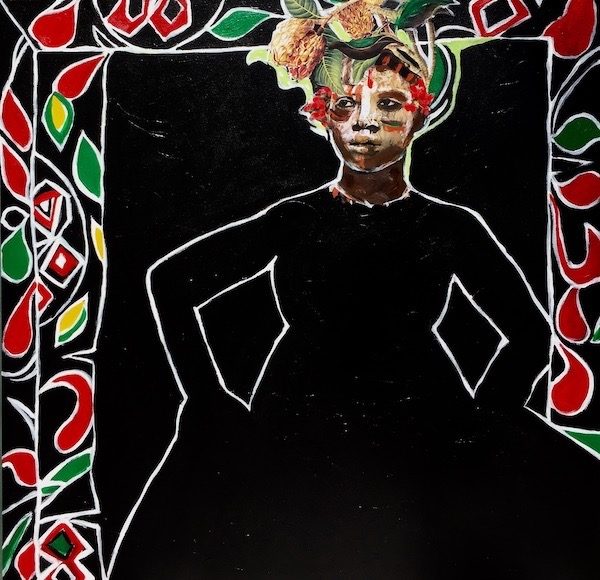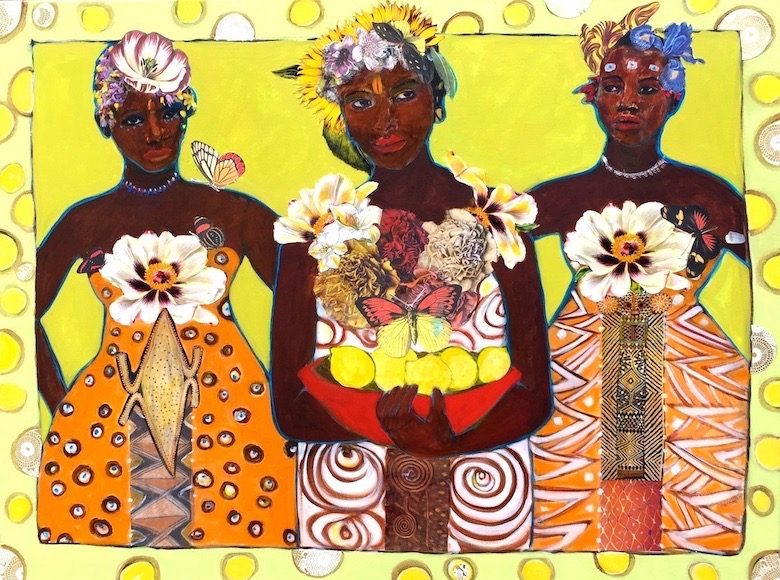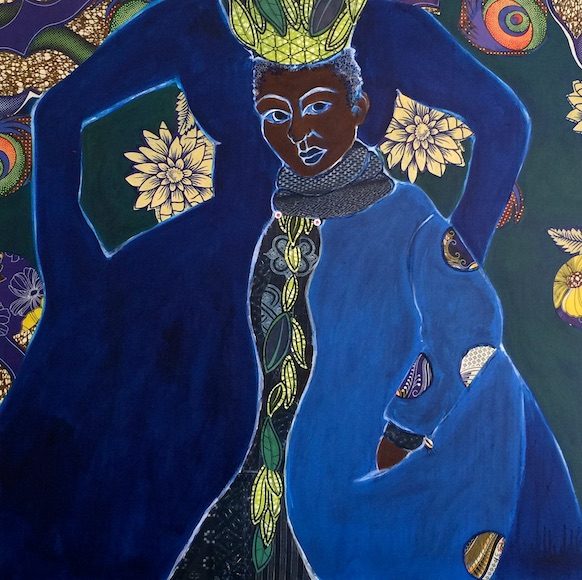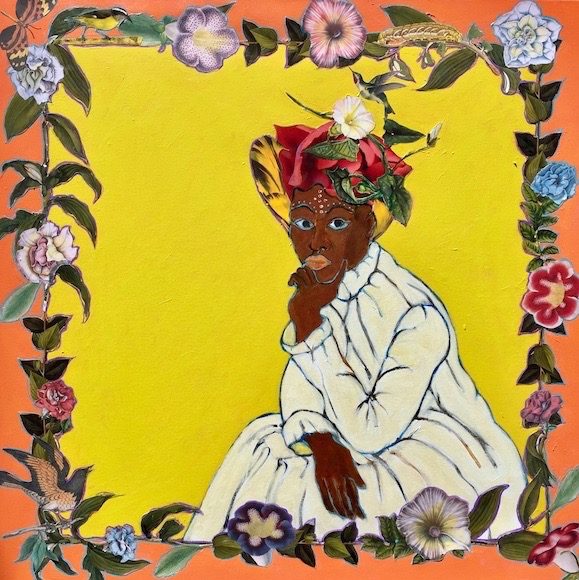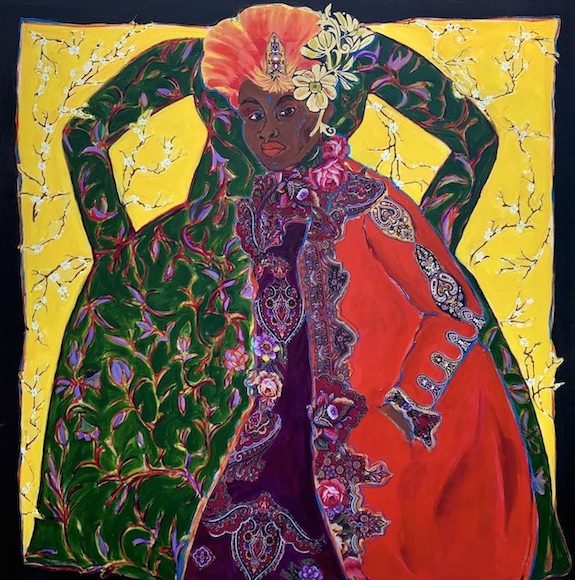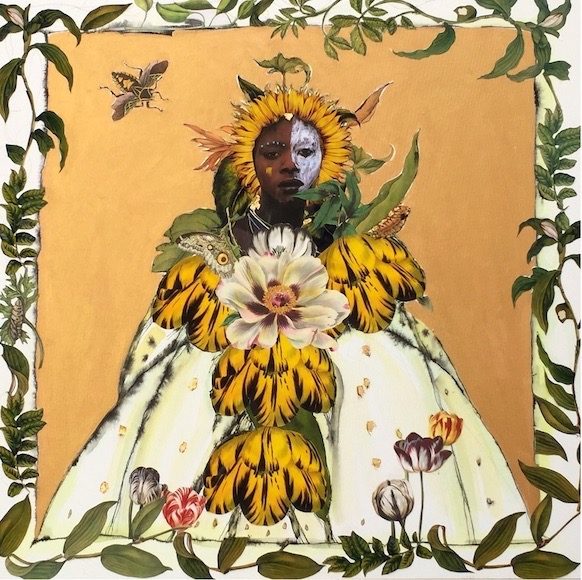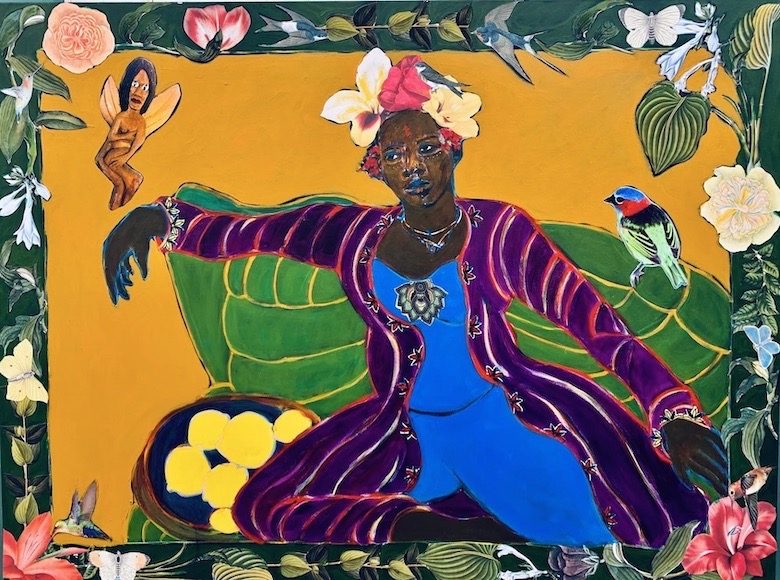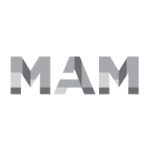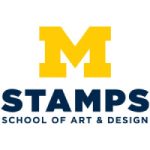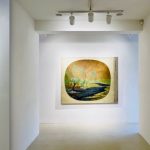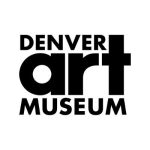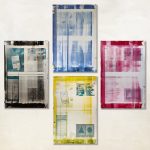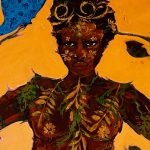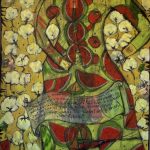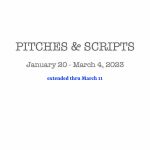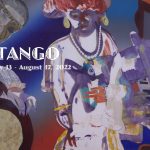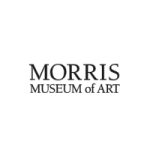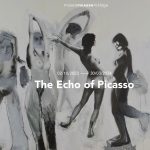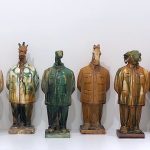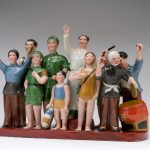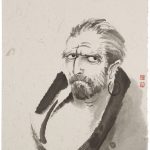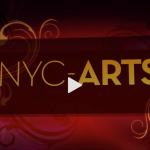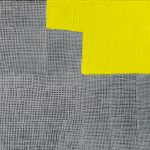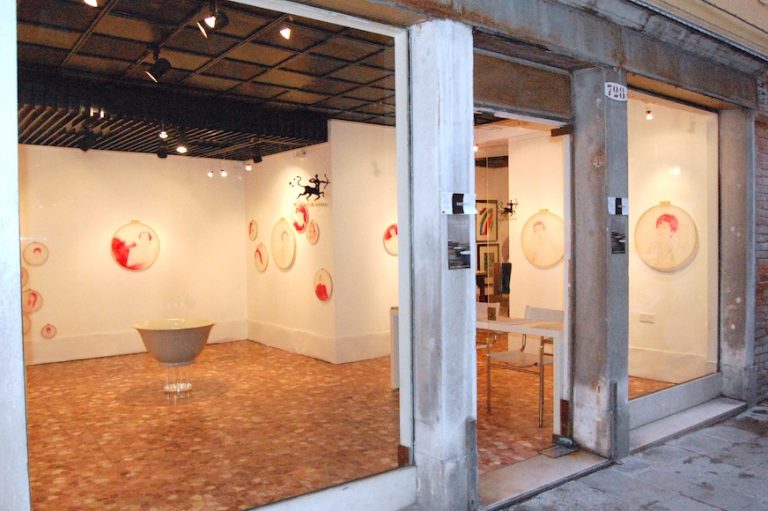ZHANG HONGTU: I DARE TO MATE A HORSE WITH AN OX
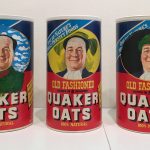
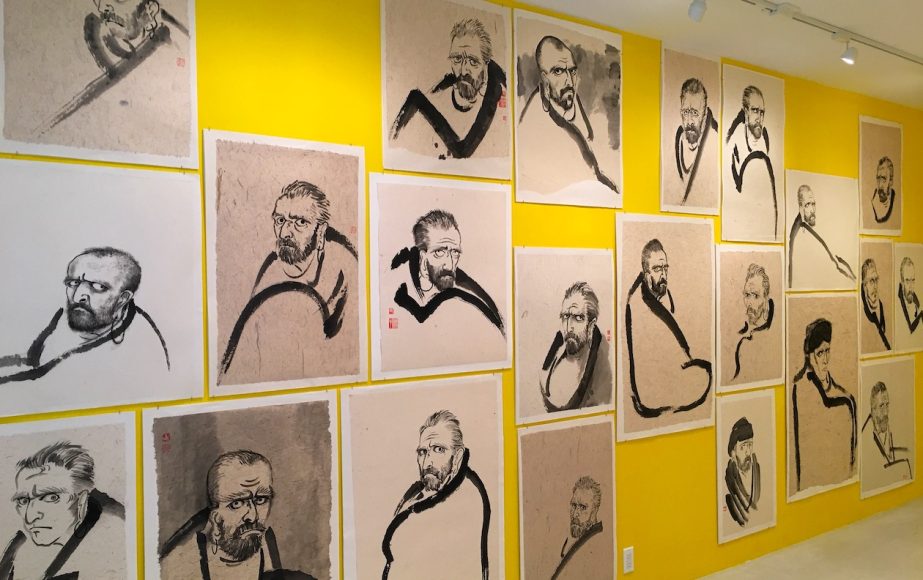
Van Gogh-Bodhidharma
2007- 2014
Detail view, a set of 39 ink paintings
Sumi ink on hand-made paper from Japan and China
Dimension Varies
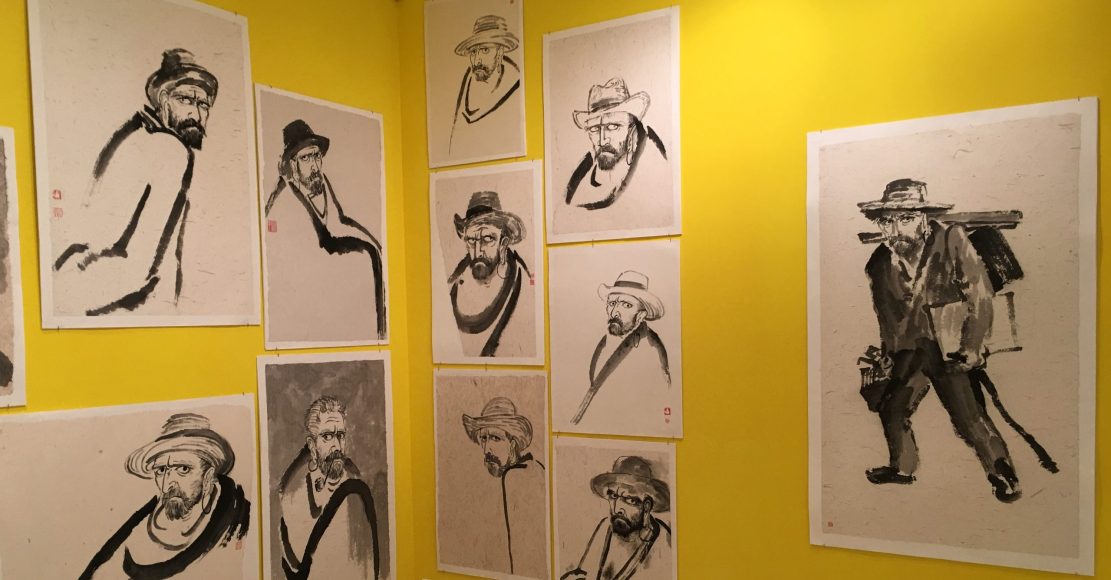
Van Gogh-Bodhidharma
2007- 2014
Detail view, a set of 39 ink paintings
Sumi ink on hand-made paper from Japan and China
Dimension Varies
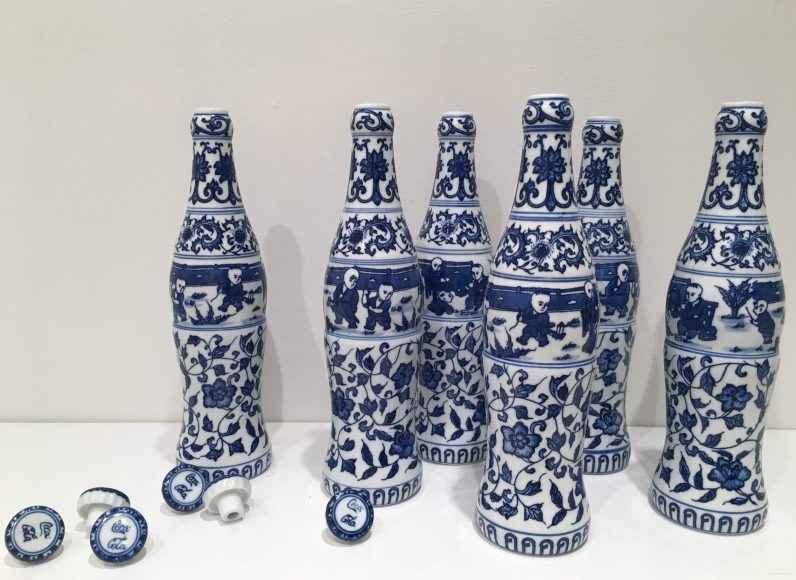
Six-Pack of Kekou-kele
2002
a set of 6 pcs with caps
Jingdezhen porcelain with underglaze blue designs
Actual size
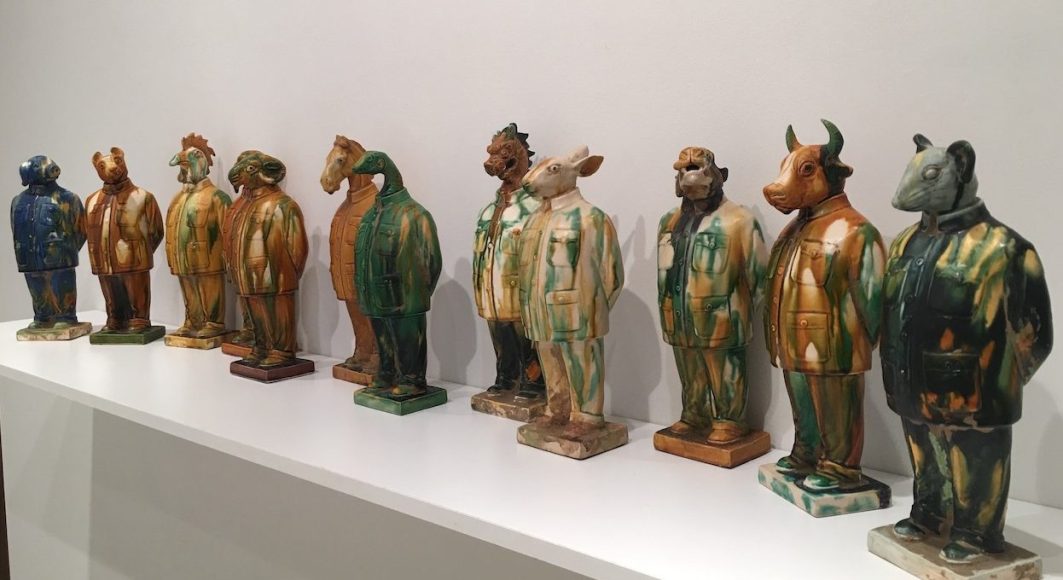
Zodiac Figures
2002
a set of 12 pcs, Earthenware with sancai glaze
Detail view
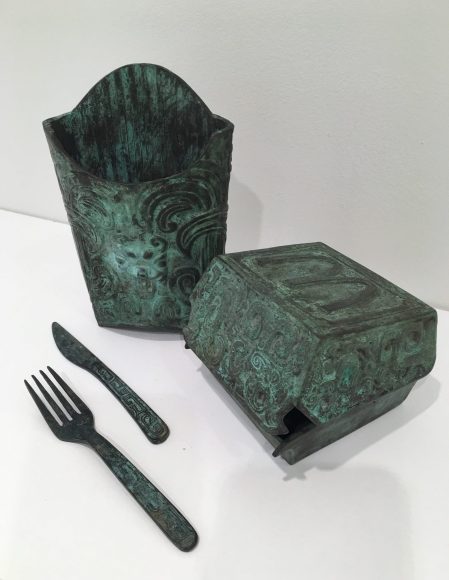
Mai Dang Lao
2002
Cast bronze, Set of 4 pcs
Actual size
Edition of 10 plus 1AP
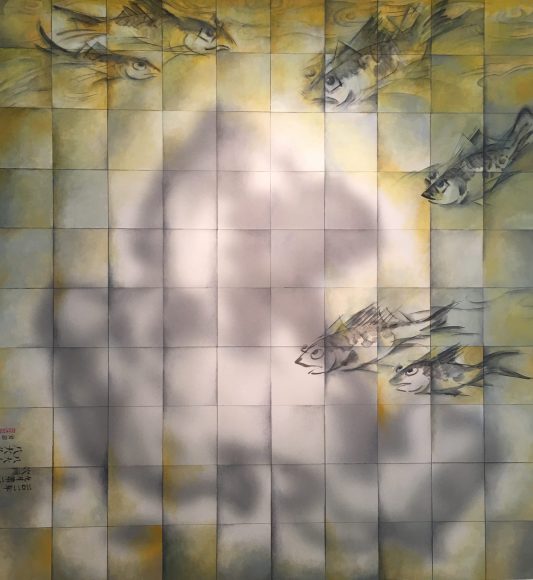
Bada! Bada!!-11, #2
2011
Oil and mixed media on paper mounted on panel
74 X 68 inch
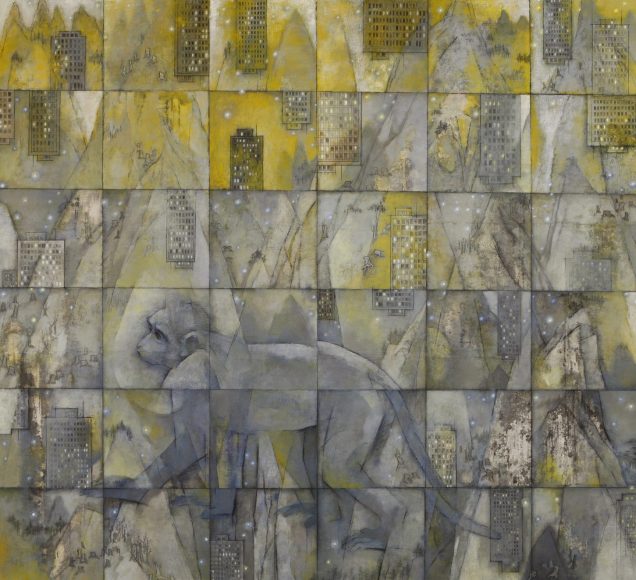
Walking Monkey
2016
Mixed media and oil on paper mounted on canvas
68 X 74 inch
Baahng Gallery is pleased to present I DARE TO MATE A HORSE WITH AN OX, the gallery’s inaugural solo exhibition of the highly celebrated works of Zhang Hongtu, a Chinese-born, New York-based artist and forerunner of the Chinese “Political Pop” art movement. The exhibition will be on view at the gallery from September 27 through November 8, with an opening reception with the artist to be held on Friday, September 27, from 6 to 8 pm.
To dare to mate a horse with an ox is to dare to break down the zygotic barriers that maintain the separation of species. This notion of doing the impossible and breaking down barriers has been the lodestar of Zhang Hongtu’s life and five decade-long career. As a Muslim outsider in China, then as a Chinese exile in America, through his works, he has continually sought to disintegrate dividing walls in culture, politics, and time. His works involve thoughtful juxtapositions of critique with humor, and the appropriation of images of authority figures and cultural icons, for the purpose of deflating the power of such formidably divisive influences. While each work captures and contemplates a multi-layered discourse on competing ideas, the exhibition as a whole unexpectedly proposes universality and relevancy.
I DARE TO MATE A HORSE WITH AN OX highlights selected works from Zhang’s series Shansui, Political Pop, and Van Gogh/Bodhidharma. Van Gogh/Bodhidharma consists of 39 ink paintings created over the course of seven years, 2007-2014. They are the Van Gogh “self-portraits” merged into the style of the classical Zen portraits of Buddhist monk Bodhidharma. His morphing of Van Gogh and Bodhidharma into one is a remarkable display of the artist’s masterful ability to dissolve distinctions between two icons. Also on view are: Bada! Bada!!-11, #2, 2011, a lopsided map of China facing a mob of angry fish; Walking Monkey, 2016, a warning on a disrupted ecosystem; Landscape, Out of the Focus, 2011, a questioning of the assumption of near-sightedness; Long Live Chairman Mao Series, 1987-1995; Zodiac Figures, 2002; Mai Dang Lao, 2002; and Six-Pack of Kekou-Kele, 2002.
Zhang Hongtu was born in Gansu, China, in 1943. He attended the Central Academy of Arts and Crafts in Beijing 1964-1969, moved to New York in 1982, and attended Art Students League 1982-1986. Selected solo exhibitions include at Queens Museum, Marianna Kistler Beach Museum of Art, Kansas, the Connecticut College Charles E. Shain Library, The Bronx Museum of Fine Arts, Kaohsiung Museum of Fine Arts, Taiwan. Selected group exhibitions at Solomon R. Guggenheim Museum, Metropolitan Museum of Art, Museu Picasso, Spain, Brooklyn Museum, Wexner Center for the Arts, Ohio, Princeton University Art Museum, Israel Museum, Louisiana Museum of Modern Art, Denmark, El Museo Nacional de Bellas Artes, Cuba, The Hall for Contemporary Art, Hamburg, Germany, Kunst und Ausstellungshalle der Bundesrepublik Deutschland, Bonn, Germany, and Taipei Fine Arts Museum, Taiwan.
ZHANG HONGTU
I DARE TO MATE A HORSE WITH AN OX
September 27 – November 16, 2019
Opening reception with the artist
6-8pm, Friday September 27
Related:
Categories: exhibitions
Tags: Zhang Hongtu
VERTIGO
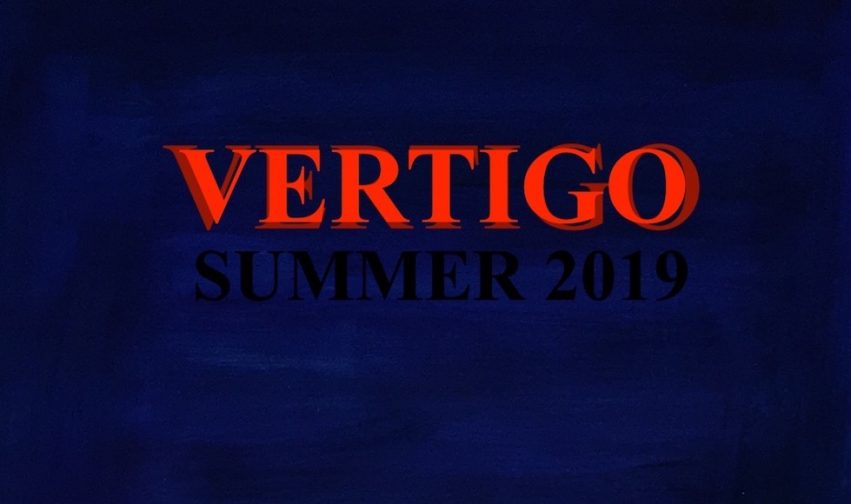
Summer 2019
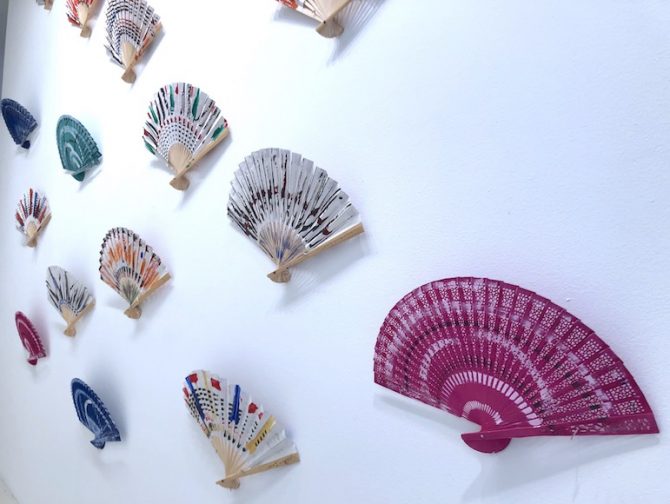
Works on paper
Jackie Matisse
Installation view
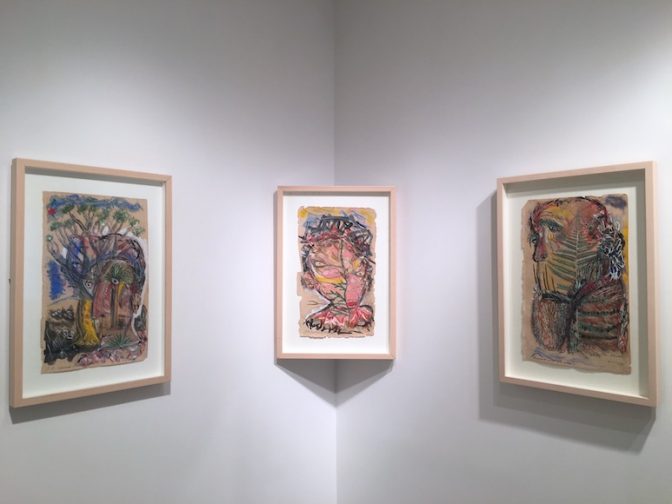
Works on paper
Alexis de Chaunac
Installation view
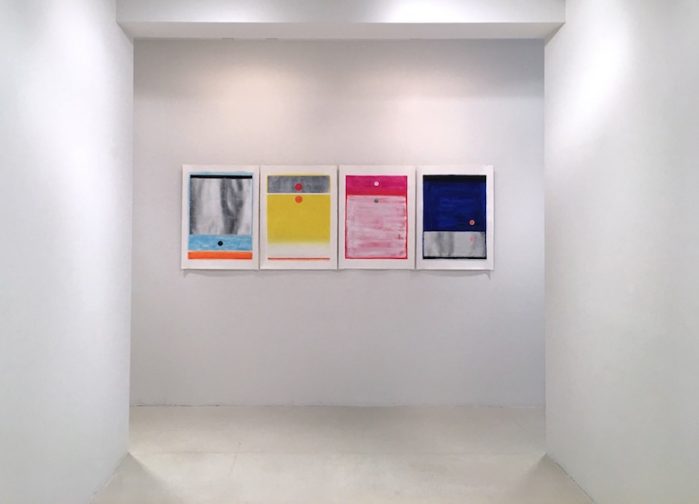
Works on paper
Lisa Beck
Installation view
Vertigo
Works on Paper
July 19 – August 23, 2019
By Appointment
……………………………..A Note to Paula | Art Volant | Candide | CS-08 Crossroads |Darwin in Contact with Nature | Expulsion and Nativity | Frankensteinʼs Monster |Further I II III IV | IT IS AS POSSIBLE TO HAVE A SPACE WITH TABLES FOR 88 PEOPLE AS IT IS TO HAVE A SPACE WITH TABLE FOR NO ONE | Kites | Mao, After Picasso | Mesostics: Earth, Air, Fire, Water | Nina Simone | Ovid Resting in Nature | Phase Conception: Spring Sea | Stephen Hawking | The Train | T.E. Lawrence Returns to Nature | Van Gogh in Contact with Nature………………………………..
Categories: exhibitions
JACK SAL: Re/Vision
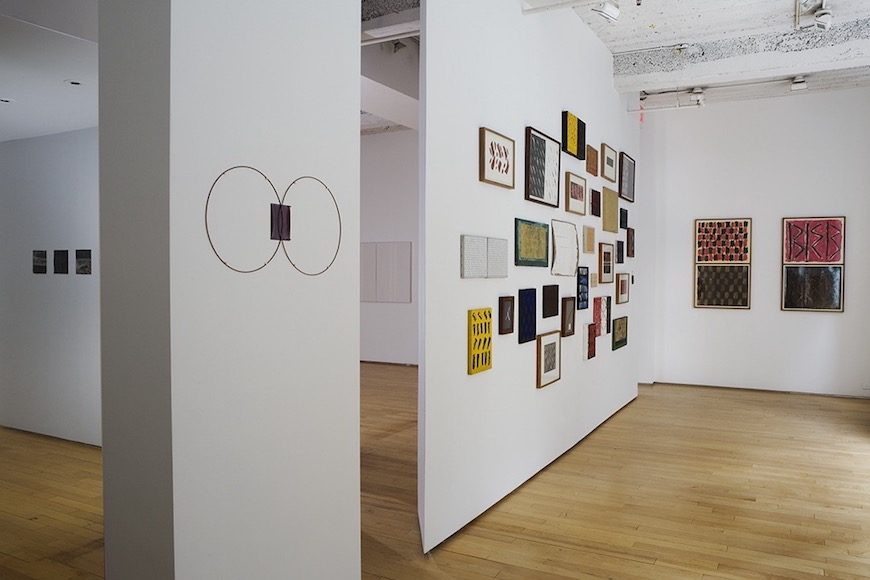
Installation view
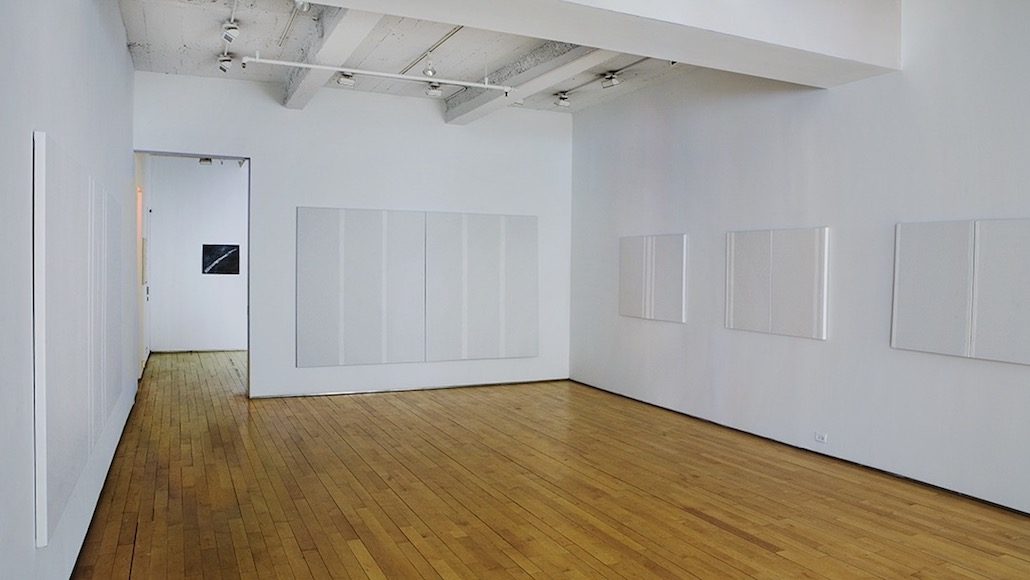
Installation view
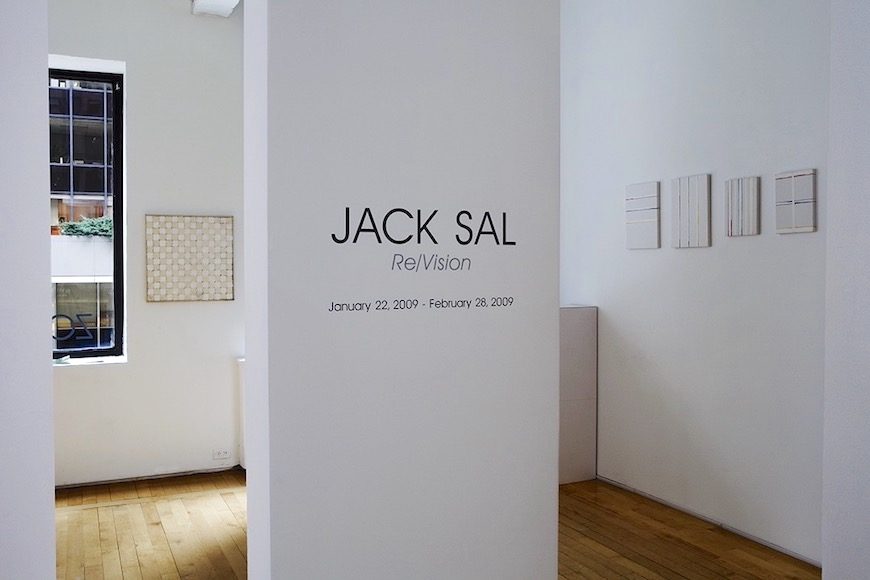
Installation view
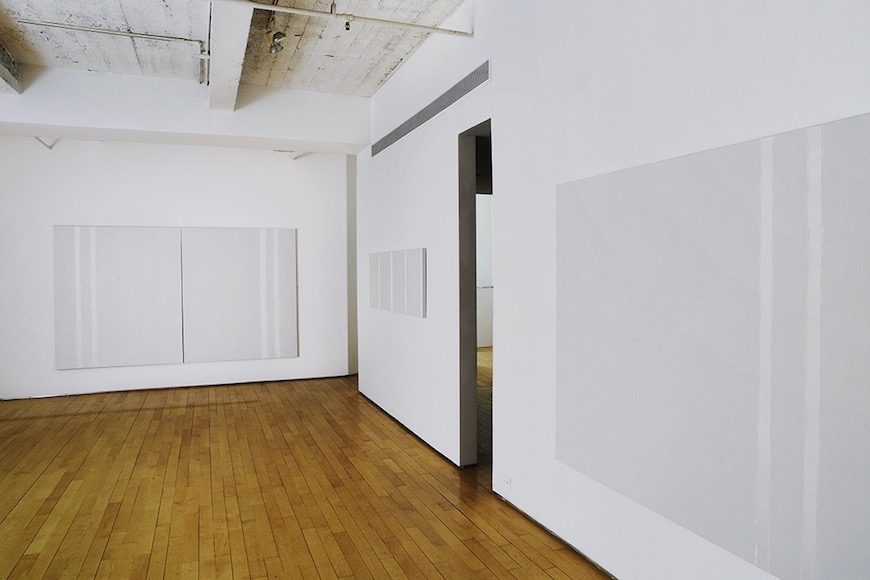
Installation view
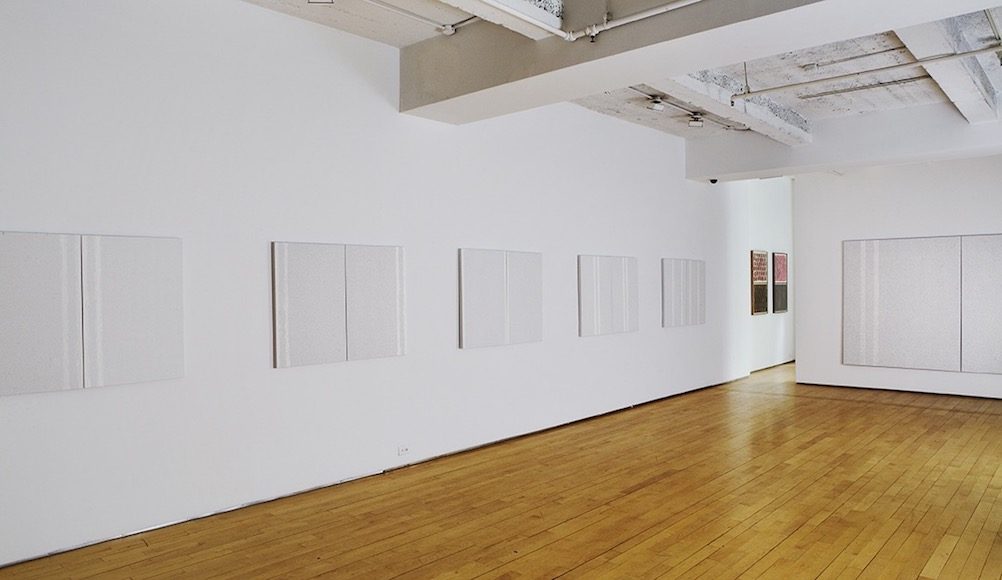
Installation view
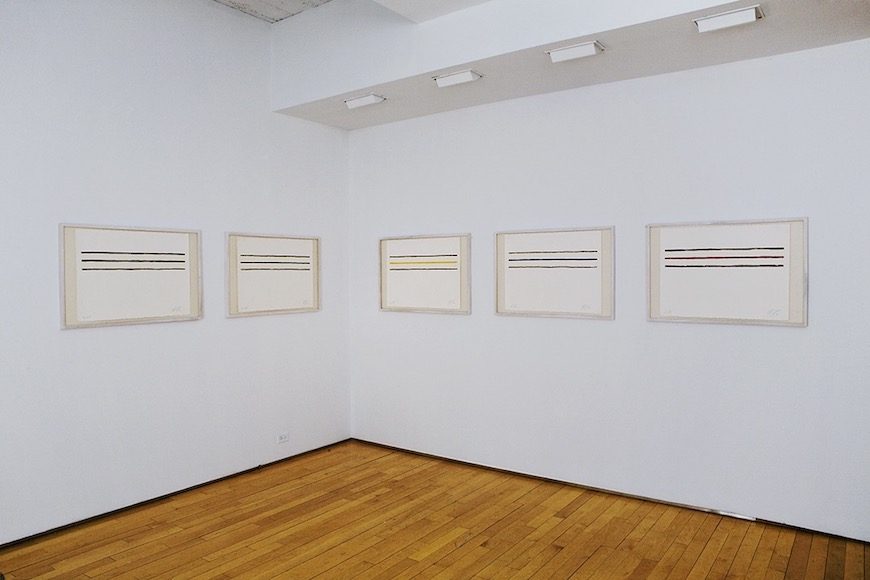
Installation view
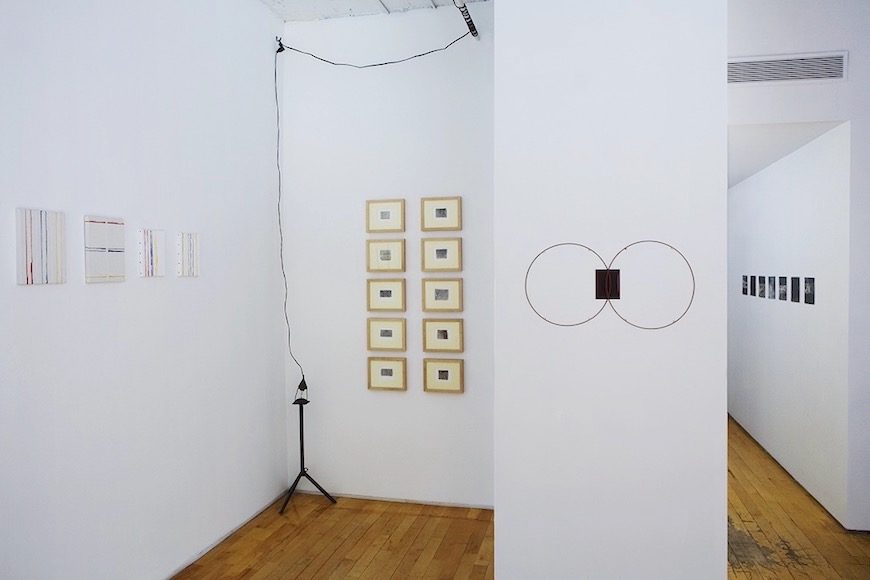
Installation view
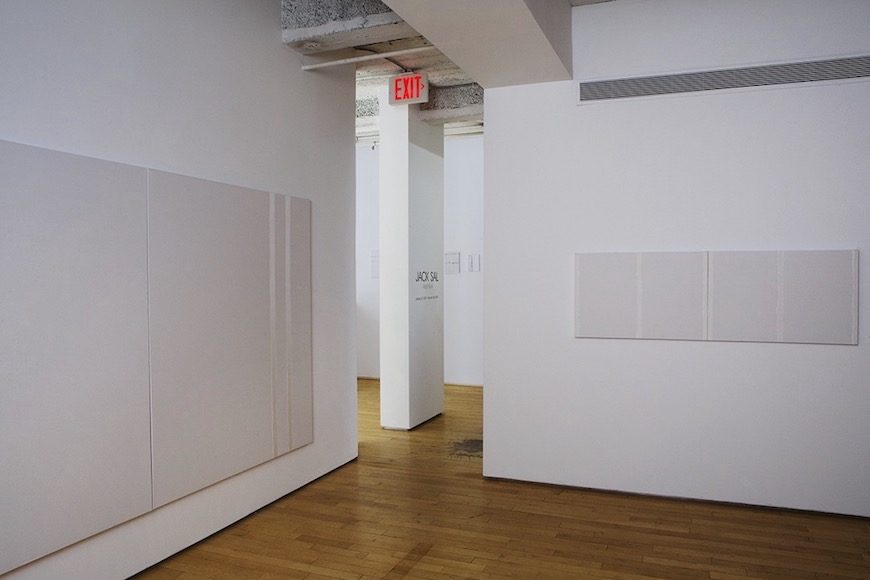
Installation view
ZONE: CONTEMPORARY ART begins 2009 with “Jack Sal: Re/Vision,” a long overdue exhibition for a multi-faceted artist. His work appears in the many permanent collections, including the Museum of Modern Art and the International Center of Photography in New York City, the Stedelijk Museum in Amsterdam and the Museum Moderner Kunst in Vienna. He is a respected figure in Europe, where he has mounted a series of remarkable site-specific installations. He has collaborated with William Wegman and Sol Lewitt and exhibited along side Sigmar Polke and Nan Goldin. But Sal’s work remains largely unfamiliar to the American public.
ZONE is presenting a cross section of Sal’s work, including a chapel-like space of large-scale paintings, using gesso and silk surgical tape, created specifically for this installation. Minimalist yet profoundly humanistic, his work has a handmade look, which carries over into a group of smaller paintings and works on paper.
Sal is intensely aware of the temporal dimension of his work, in general, and this exhibition, in particular. He sees this new year as a “moment when the demarcation of change is upon mankind….” and it is the engagement of culture with such conditions that make up the conceptual language of the works created for Re/Vision. These art works refer to their own making and ultimately refer to the tabula rasa of this very important moment. Temperamentally, he has much in common with Terry Riley, the composer of seminal works of musical minimalism such as the serenely joyous “In C”. Like Riley, an unassuming figure who never crossed over into mainstream success, Sal works with pared-down idioms, avoiding epic emotions and climaxes, and finding lyrical grace in repetition on an intimate scale. In “Minor/Key” Sal makes an oblique musical reference, isolating an ebony piano key and enshrining it in a box.
While he sees marking as a basic artistic act, Sal also incorporates the natural processes inherent in some of his materials. A celebrated photographer, he uses photo-printing paper to capture light and has revived the cliché-verre technique used by nineteenth-century pioneers in the medium. He slices lead plates and allows them to weather naturally: the veining coalesces into landscape-like patterns. These small, square panels provide a dark counterpoint to the predominantly white works in the exhibition. Using a relatively simple palette, Sal explores a wide range of materials and ideas, offering a fresh vision of the art experience
JACK SAL: Re/Vision
January 22 – February 28, 2009
Opening reception
6-8pm, Thursday January 22
Related:
Categories: exhibitions
Tags: Jack Sal
PASHA RADETZKI: Crossed House
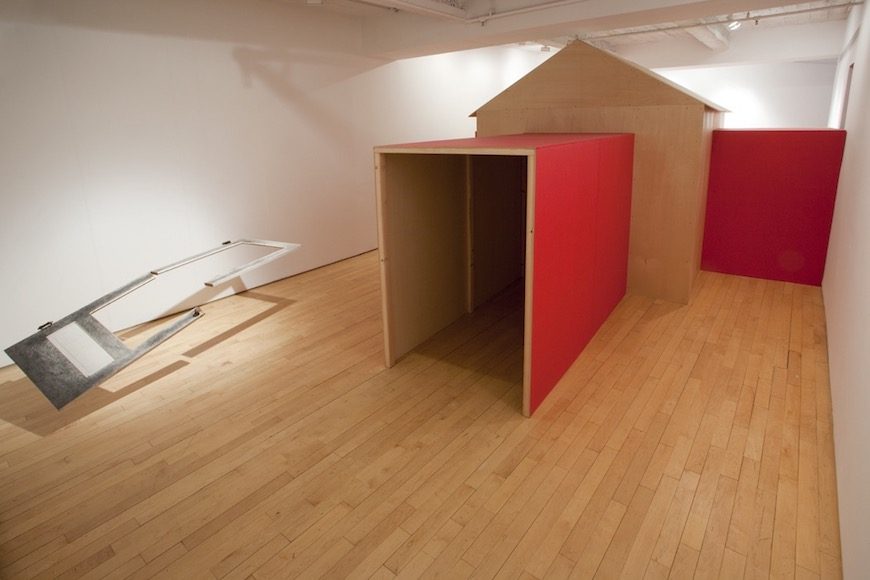
Solo exhibition by Pasha Radetzki
Installation view
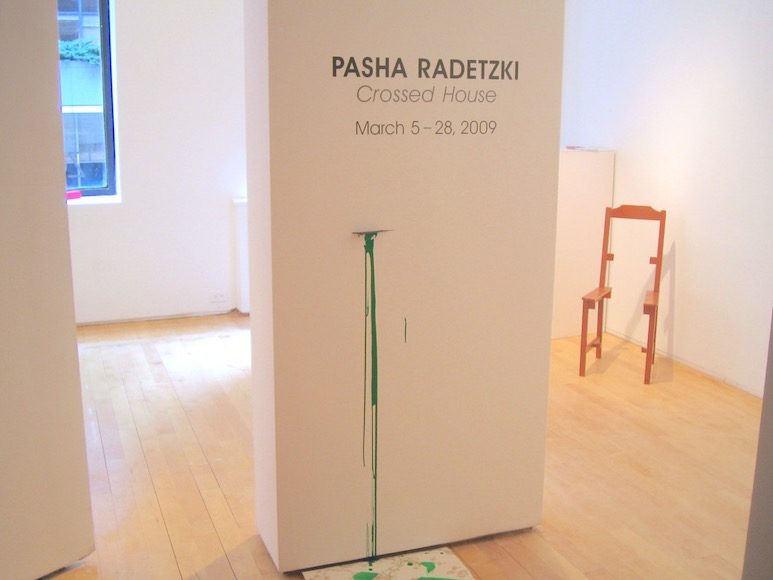
Solo exhibition by Pasha Radetzki
Installation view
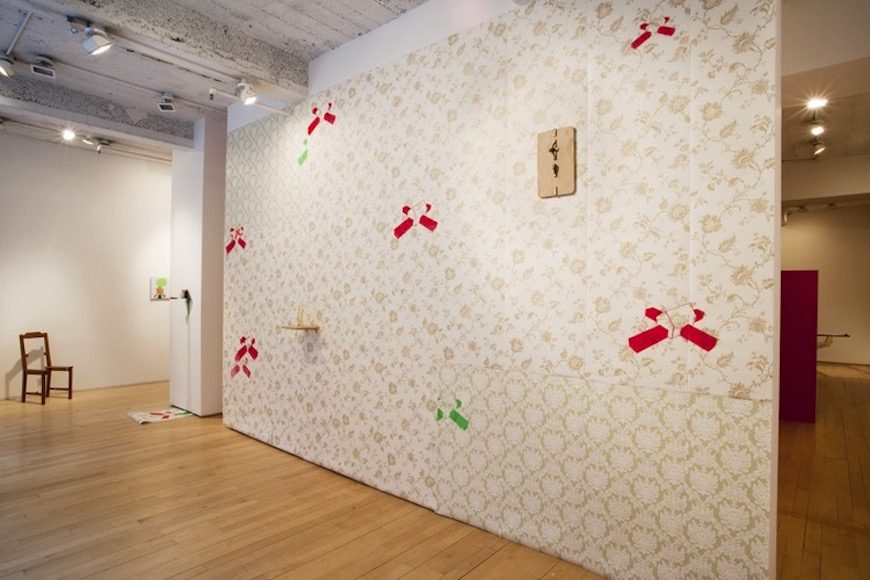
Solo exhibition by Pasha Radetzki
Installation view
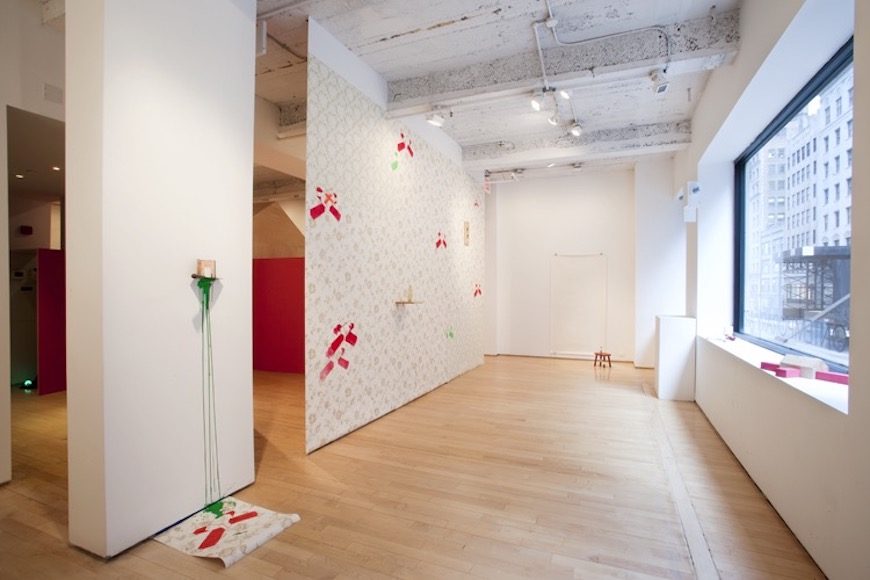
Solo exhibition by Pasha Radetzki
Installation view
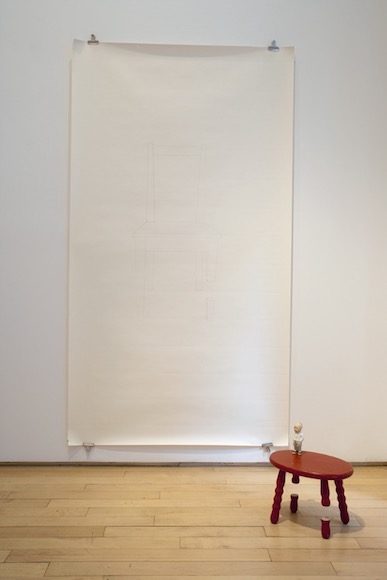
Solo exhibition by Pasha Radetzki
Installation view
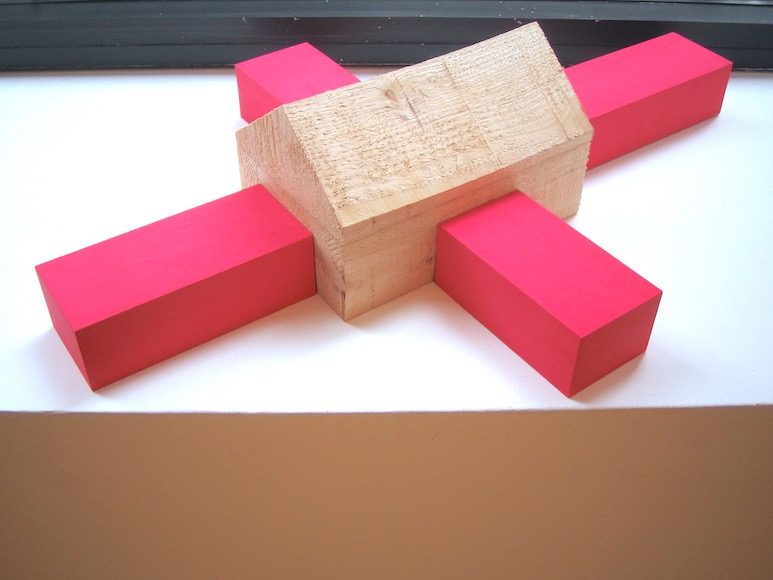
Solo exhibition by Pasha Radetzki
Installation view
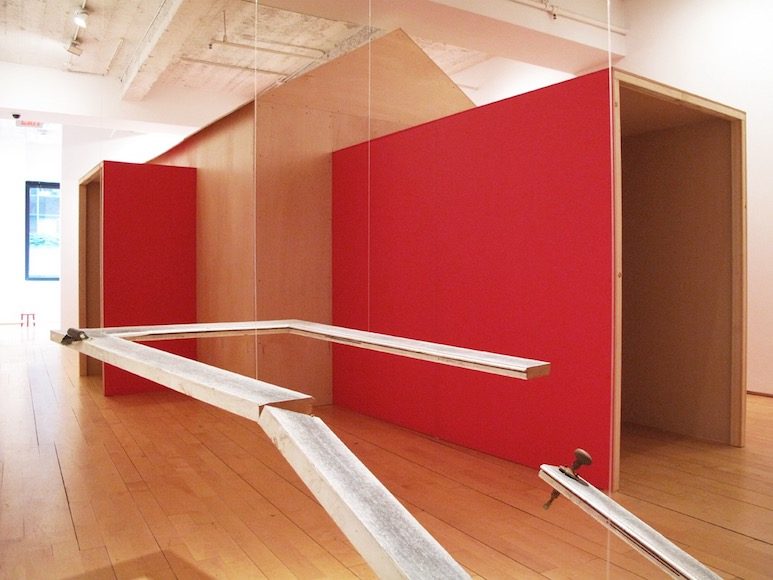
Solo exhibition by Pasha Radetzki
Installation view
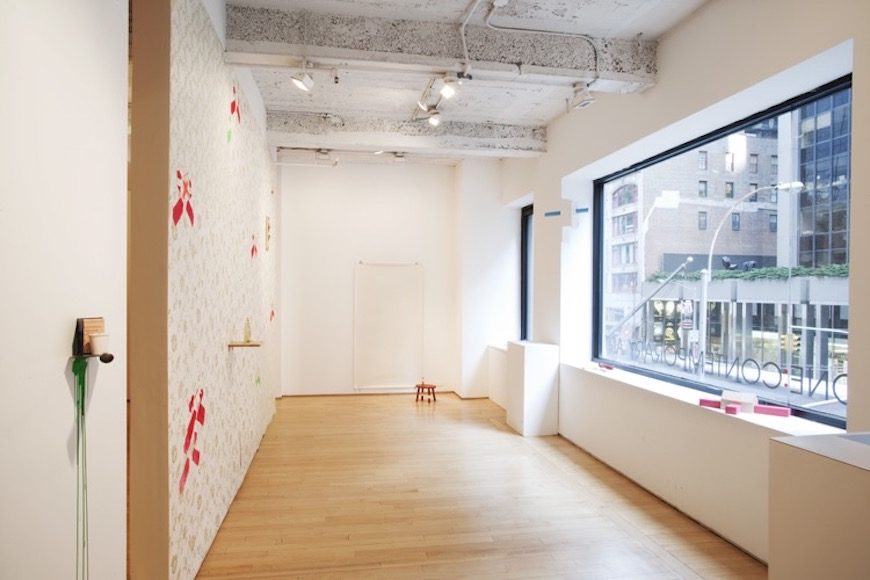
Solo exhibition by Pasha Radetzki
Installation view
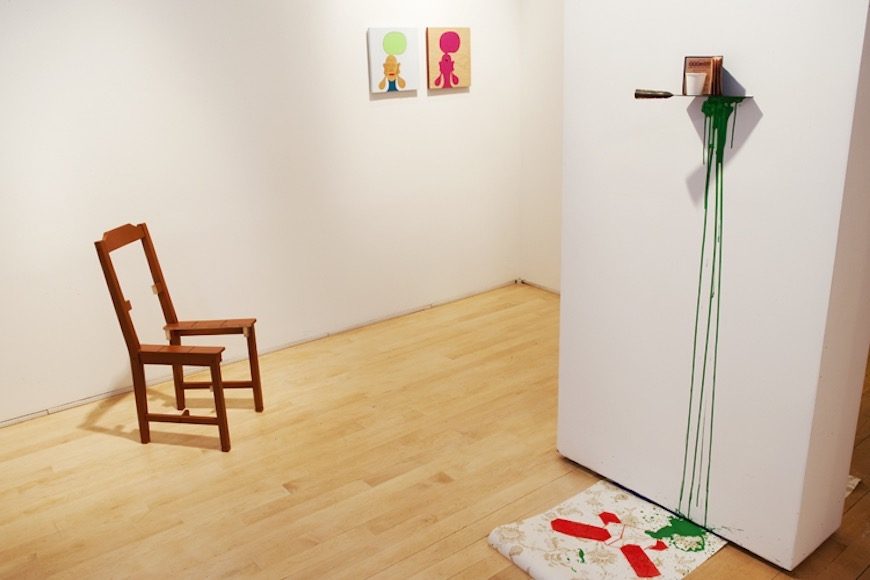
Solo exhibition by Pasha Radetzki
Installation view
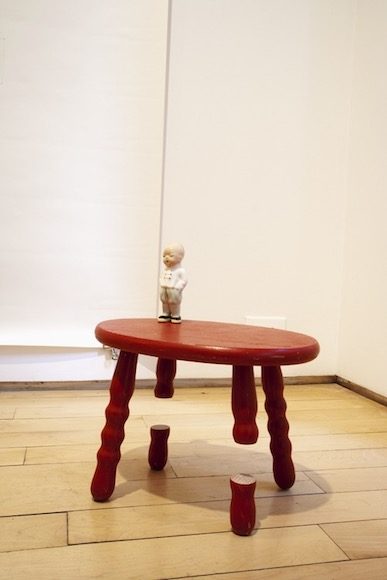
Solo exhibition by Pasha Radetzki
Installation view
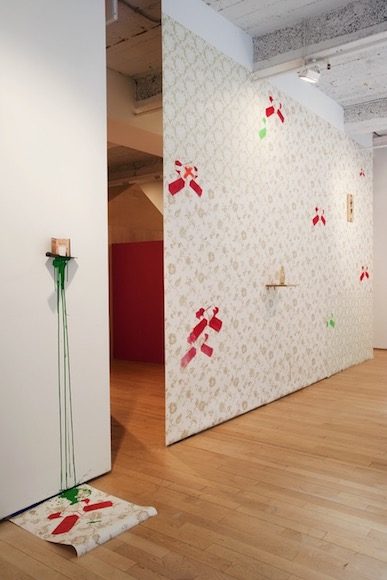
Solo exhibition by Pasha Radetzki
Installation view
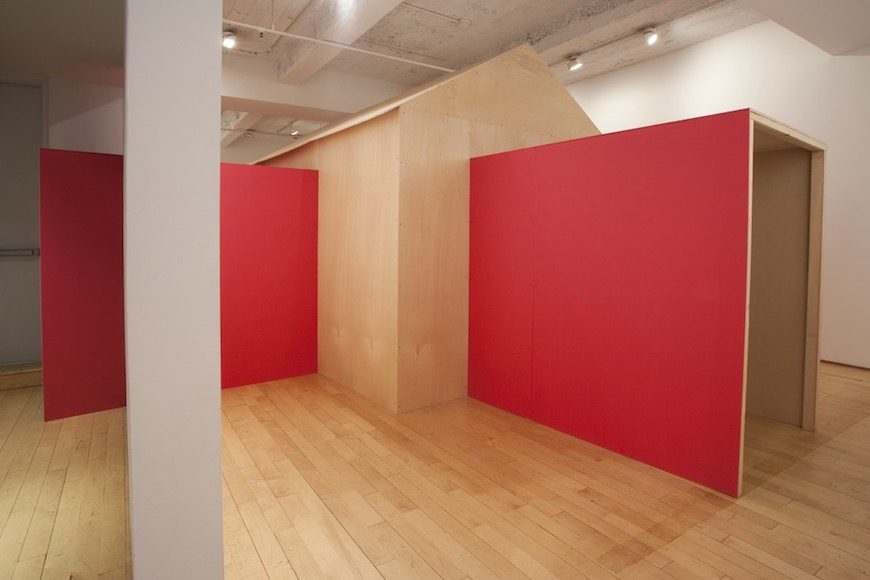
Solo exhibition by Pasha Radetzki
Installation view
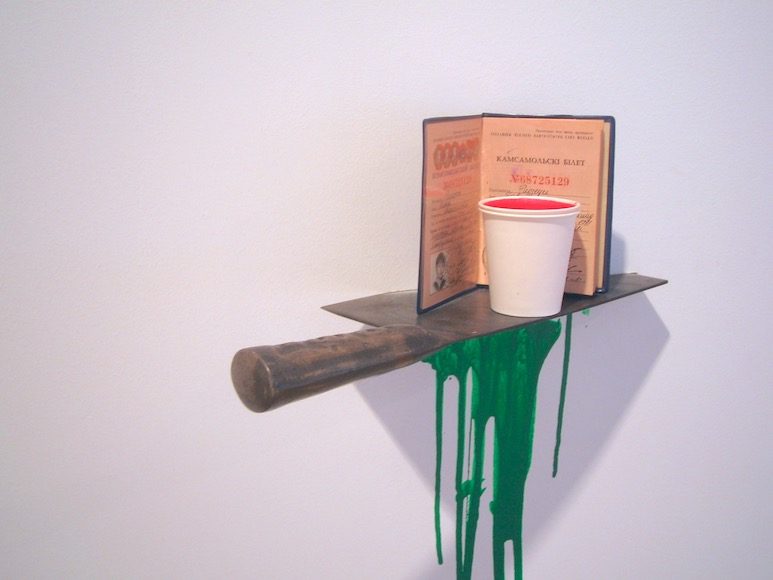
Solo exhibition by Pasha Radetzki
Installation view
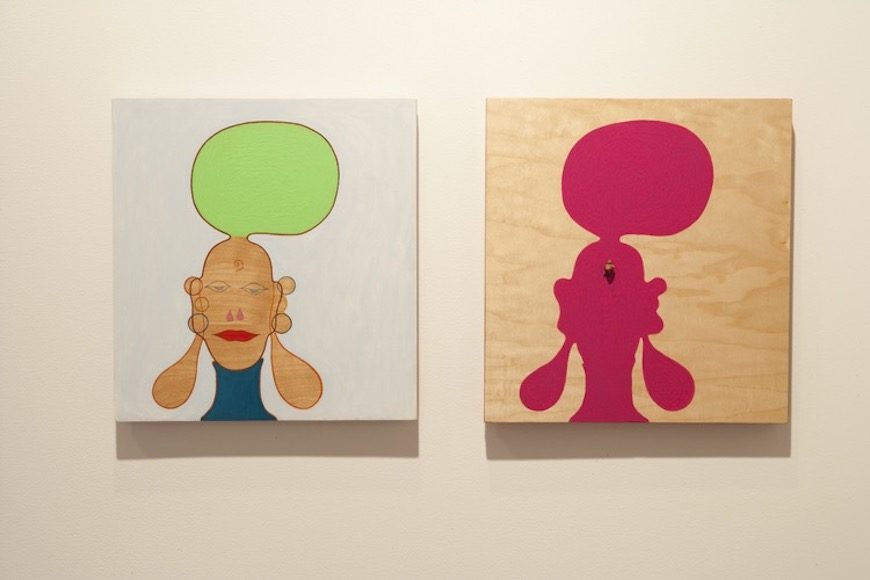
Solo exhibition by Pasha Radetzki
Installation view
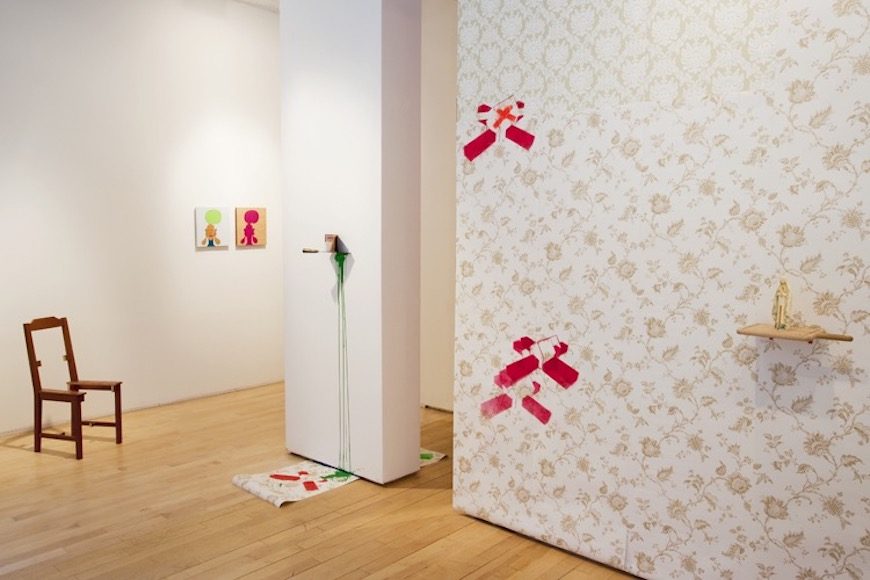
Solo exhibition by Pasha Radetzki
Installation view
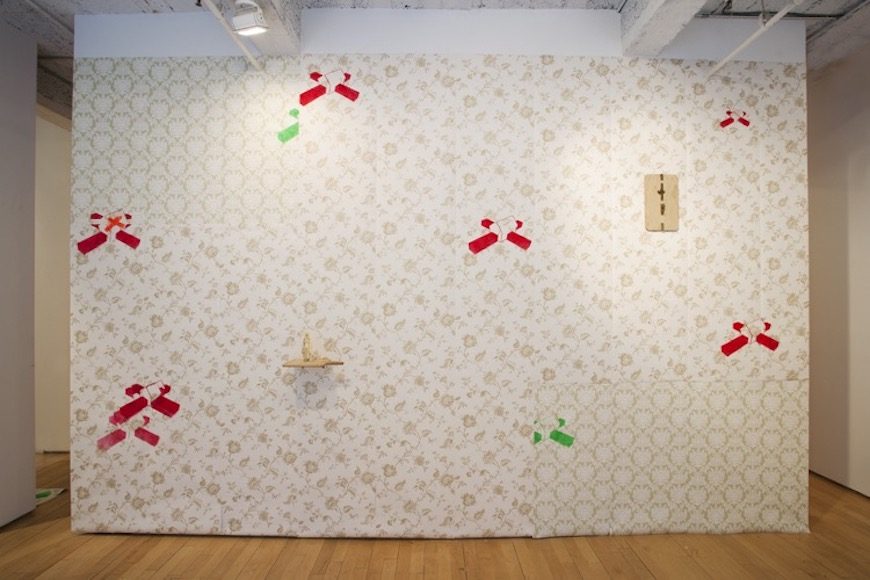
Solo exhibition by Pasha Radetzki
Installation view
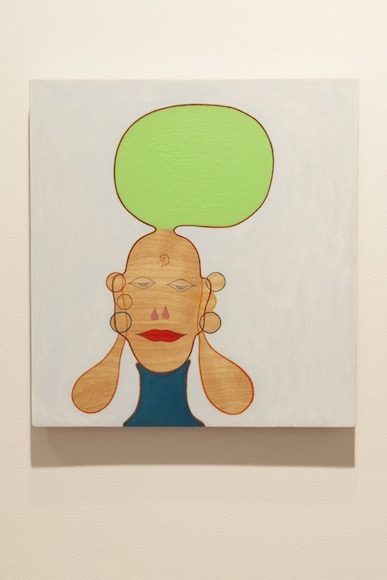
Solo exhibition by Pasha Radetzki
Installation view
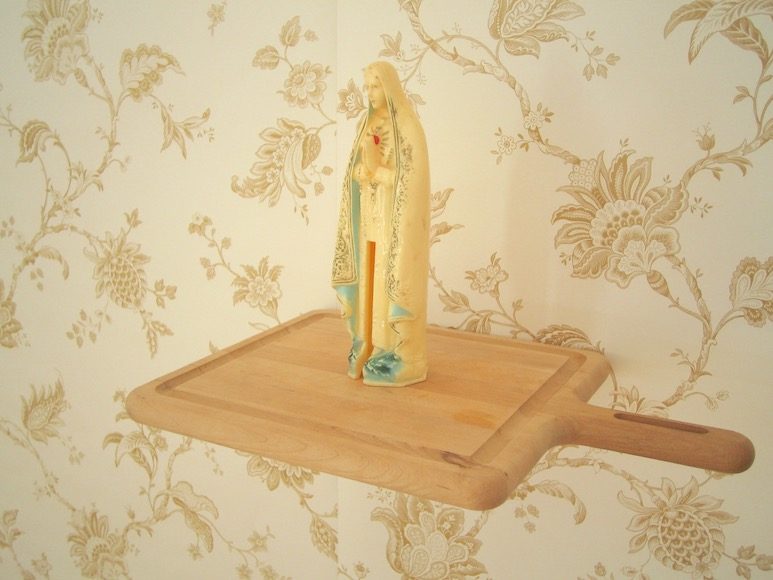
Solo exhibition by Pasha Radetzki
Installation view
ZONE: CONTEMPORARY ART is proud to present Pasha Radetzki in his first solo exhibition in New York. The exhibition showcases installation, sculpture, paintings, and drawings accompanied by sound. The concept of trans-space is manifest in the works on view and drawing on the artist’s childhood memories and heritage.
Crossed House is an interactive environment where a large-scale sculpture Cross cuts through a house. Viewers are invited to pass through the cross embodying themselves in the regeneration process of the site’s four cardinal directions. The installation adopts the Slavic nesting Doll within the Doll, Matryoshka construction tradition to present the house in all its dimensions, expanded and interconnected. This confirms the artist’s notion of “socium”: the micro-macro form coexists and interrelates, as there are multiple houses built in the space of one.
From the Republic of Belarus, the artist since 1999 has been based in New York. Pasha Radetzki has exhibited in Germany, Moscow, Spain, Mexico, South Korea and Taiwan. His works are included in the public and private collections of Exit Art, Moscow House of Photography, Belarus Museum of National History, and Faro Disegni inRome. In 2002 he was a recipient of an international ArtsLink Projects Award for installation from CEC International Partners, New York. Numerous fieldwork projects have taken the artist to the tribal areas of Mynamar and Laos, the Amazon delta, the Himalayan western region, Andean Puna, and Western China. Pasha Radetzki’s art reviews have appeared in The Village Voiceand New York Arts Magazine.
Crossed House
A solo exhibition by Pasha Radetzki
March 5 – 28, 2009
Opening reception
6-8pm, Thursday March 12
Categories: exhibitions
Material Matters: A Poetics of Possibilities
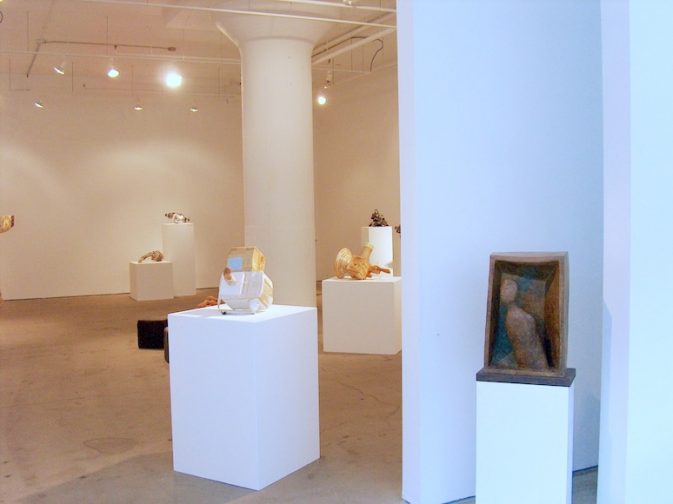
Curated by Howard Risatti
Installation view
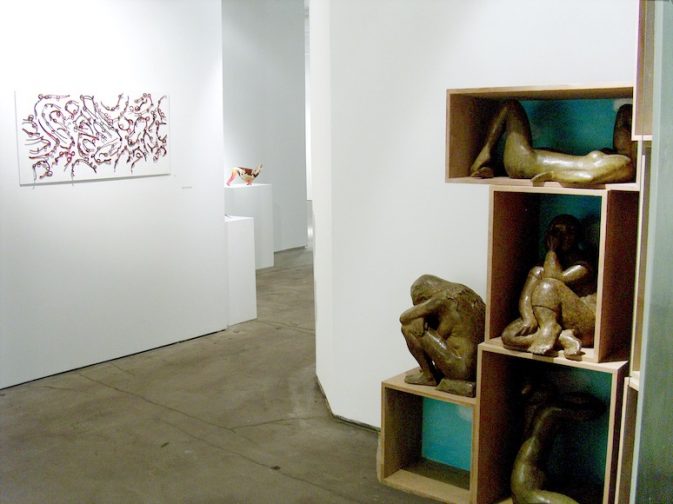
Curated by Howard Risatti
Installation view
Exhibition guest curated by Dr. Howard Risatti, critic and Chair, Department of Craft/Material Studies at Virginia Commonwealth University
Zone: Chelsea Center for the Arts will present the work of a group of established artists and their young, emerging counterparts, all of whom work primarily in traditional Craft materials, but without relying on function as their primary support.
In an art world in which Craft materials are regularly used in the manner of Fine Art (e.g., Rosemarie Trockel’s knitting and Jeff Koons’ slip-cast ceramics), traditional distinctions based on material alone hardly seem significant. Material Matters: A Poetics of Possibilities features a wide range of objects in typical Craft materials that challenge conventional notions of Craft and explore the sensibilities guiding Craft disciplines.
Craft has always involved a dialogue between material, form, and technique resulting in beautifully made objects that allow material to co-exist in itself. While few works in the exhibition are functional in nature, they all tend to have features that express the special nature of Craft. Works included in this exhibition demonstrate that cross-cultural, global affinities in form, material, technique, and concepts have long been a part of Craft.
Moreover, Craft generally adheres to an idea of the object as personally scaled and suitable for the domestic realm; thus out-sized, museum-scaled objects tend to be avoided. In place of the grand, public gesture common to Fine Art, Craft works tend to be more intimate and personal in scale and sentiment–more like chamber music than grand opera. Because Craft objects invite touch, interactive qualities of “feel,” weight, and balance are part of their intimate aesthetic appeal.
Material Matters: A Poetics of Possibilities
An Exhibition of Art in Craft Media
Exhibition guest curated by Dr. Howard Risatti, critic and Chair, Department of Craft/Material Studies at Virginia Commonwealth University
June 30 – July 23, 2005
Opening Reception
6-8pm, Thursday, June 30
MATERIAL MATTERS: A POETICS OF POSSIBILITIES
An Exhibition of objects in Craft Media
by Dr. Howard Risatti
Most of the artists in this exhibition engage a wide range of materials traditionally associated with Craft–for example, among the more established artists, Jack Wax works in glass, Allan Rosenbaum in ceramic, Douglas Finkel in wood, James Meyer in metal, and John Hawthorne in fiber. Because of this, they would be identified as “Craft artists.” However, in an art world in which Craft materials are regularly being used in the manner of Fine Art, distinctions based on material alone hardly seem important any longer. If they were, where would we place Rosemarie Trockel with her knitting, Mike Kelly with his stuffed animals, and Jeff Koons with his slip-cast ceramics? What is important about material, as this exhibition demonstrates, is how it is ultimately used in the service of artistic expression.
When it comes to Craft, most people, whether consciously or not, still assume that Craft objects exhibit certain features, the most prominent of which is function. This exhibition is decidedly not about function–in fact few works in it are actually functional, not even Bill Hammersley’s benches, Jason Hackett’s urns, or Adam Welch’s platters. Rather, it is an exploration of the special meanings and sensibilities inherent in Craft. For instance, embracing the global (currently so evident in the art world) is hardly new to Craft since Craft-disciplines have always had cross-cultural affinities in form, material, technique, and concepts. Artists in this exhibition such as Hyo-in Kim and Ji-Wan Joo exploit Korean and Western ceramics, similarly, Lydia Thompson’s work displays elements of African design, and Susan Iverson employs Peruvian weaving methods.
Craft objects tend to be relatively small and avoid the monumental scale implicitly invited by spacious contemporary museums. Ceramists Sergei Isupov and Suk-Jin Choi, fabric artists Nicole Haimbach and Maria Kovacs, and woodworkers Kate Hudnall and Travis Townsend, all create objects more closely scaled to the body than to monumental architecture. Their art works do not require large, formal exhibition spaces, but are quite at home in more personal and familial surroundings.
Craft objects tend to direct attention to the domestic realm rather than public spaces, something evident in J. D. Garn’s ceramics and Cindy Myron’s metal work. They also tend to speak intimately and personally; more akin to chamber music than grand opera. Moreover, in keeping with their sense of scale and setting, the concern with material in Craft includes fragility and interactive tactile sensations which, after all, are redolent with domestic life’s interpersonal and bodily relationships; such features are apparent in the glass works of Emilio Santini, Fumiaki Odajima, and Tim Wagner and the ceramics of Fiona Ross.
The Craft object speaks in another voice, one that compliments rather than contradicts Fine Art. In doing so it suggests a cross-cultural understanding of personal space that is rich with poetic possibility.
Howard Risatti is Emeritus Professor of Contemporary Art and Critical Theory in the Department of Art History at Virginia Commonwealth University where he also was Chair of the Department of Craft/Material Studies from 2001-05. Before receiving his PhD in art history, he earned BM and MM Degrees in music and is ABD in music theory and composition.
His writings on art and craft have appeared in various journals including the Art Journal, Artforum, New Art Examiner, Artscribe, Latin American Art, The Chronicle of Higher Education, The Woman’s Art Journal, Art Criticism, The Studio Potter, Sculpture, and Ceramic Art & Perception. Most recently he wrote on Jackie Matisse’s “Collaborations in Art and Science” for Sculpture Magazine, on “Contemporary American Ceramic Trends” for Korean Ceramics Monthly, and on the ceramic sculpture of Suk-Jin Choi for Ceramics Monthly.
He has presented numerous papers on various subjects including functional crafts at the 2003 Cheongju Craft Biennial in Korea; Jackie Matisse’s virtual reality kites at the “Art and New Technologies” conference in Chalon sur Soane, France; Leo Steinberg’s “Contemporary Art and the Plight of its Public” at the 2005 College Art Conference in Atlanta; and Craft versus Design at the 2005 Society of North American Goldsmiths’ conference in Cleveland.
His first book was New Music Vocabulary and appeared in 1975 (University of Illinois Press); Postmodern Perspectives: Issues in Contemporary Art appeared in 1990 and the 2nd edition in 1998 (Prentice Hall). The Mountain Lake Workshops: Artists in Locale (1996, Anderson Gallery & VA Tech Foundation) ) accompanied the exhibition that he curated of the same title. In 1998 he co-authored with Kenneth Trapp Skilled Work: American Craft in the Renwick Gallery (Smithsonian Institution Press). His latest book, A Theory of Craft: Function and Aesthetic Expression (UNC Press), is scheduled to appear in Fall 2007.
Categories: exhibitions
YOOAH PARK
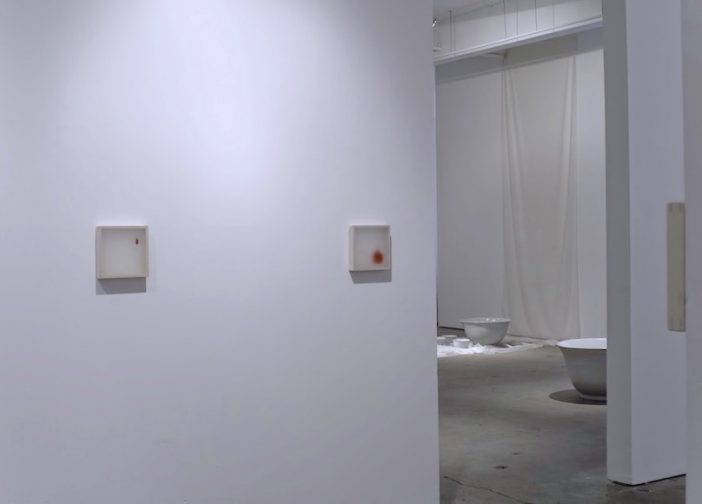
Solo exhibition
Installation view
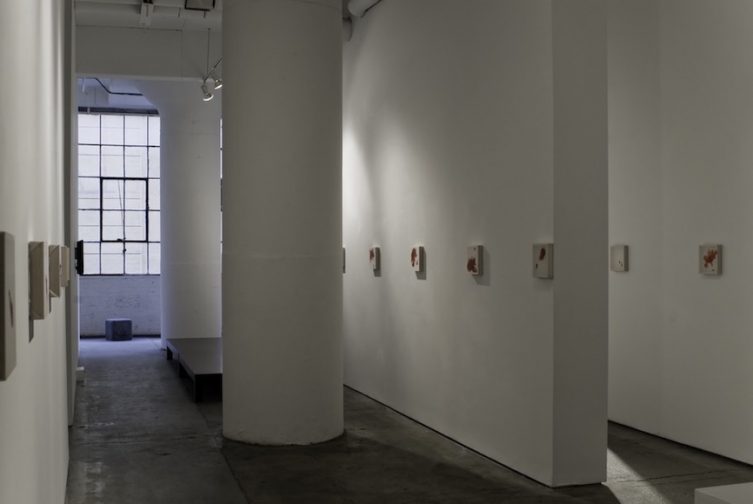
Solo exhibition
Installation view
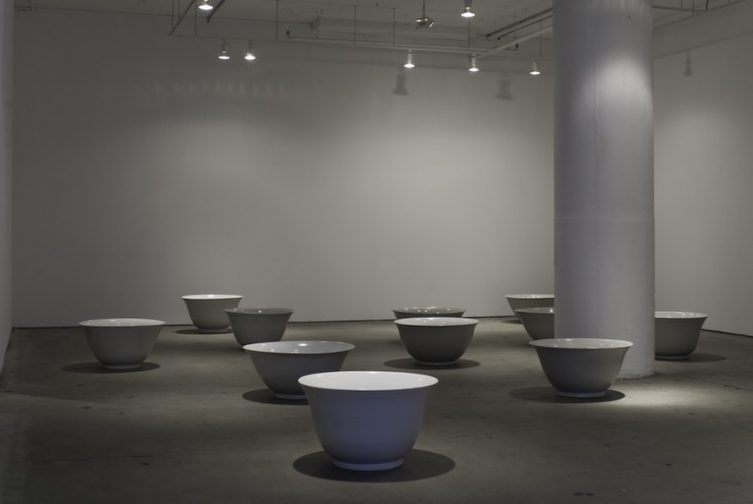
Solo exhibition
Installation view
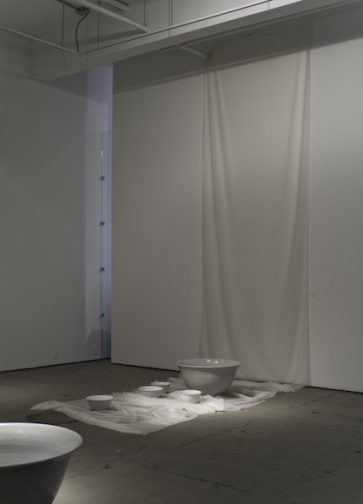
Solo exhibition
Installation view
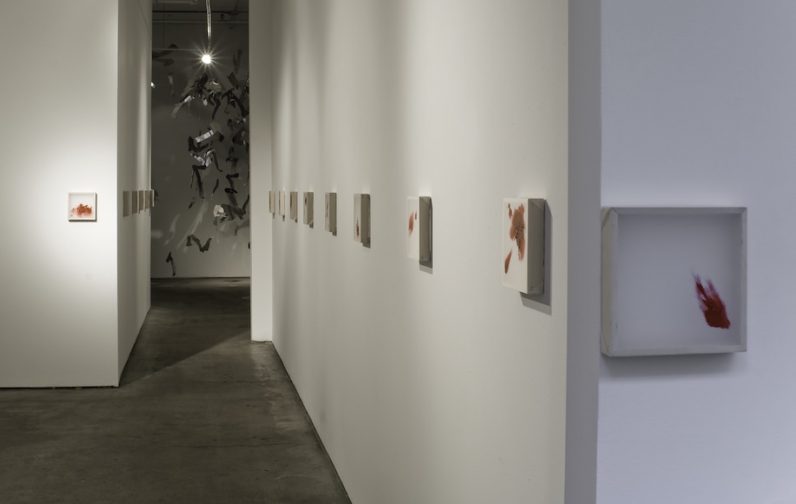
Solo exhibition
Installation view
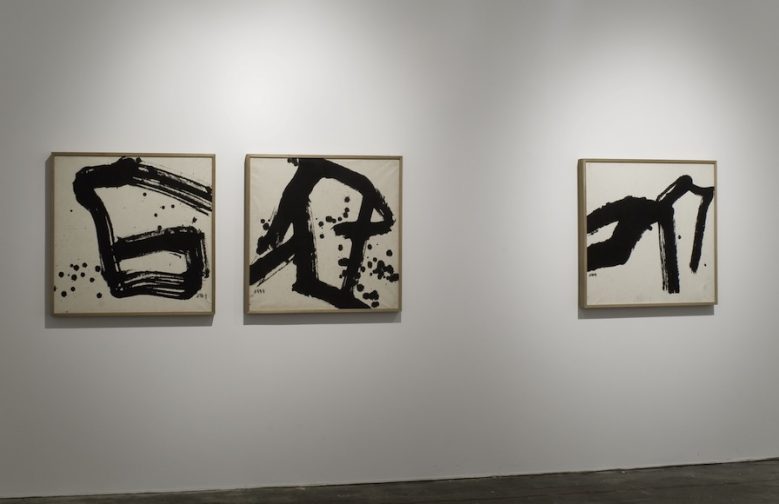
Solo exhibition
Installation view
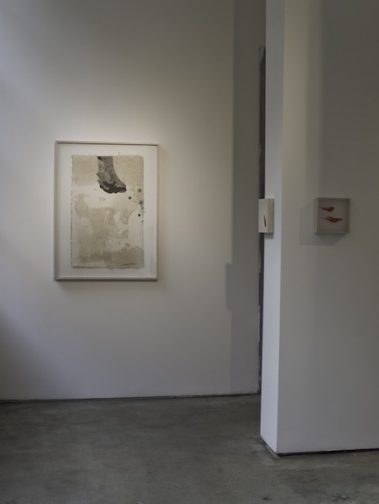
Solo exhibition
Installation view
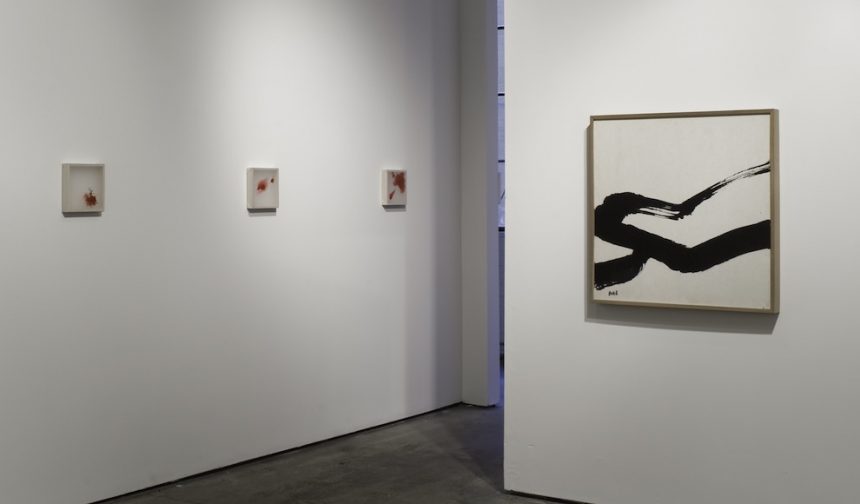
Solo exhibition
Installation view
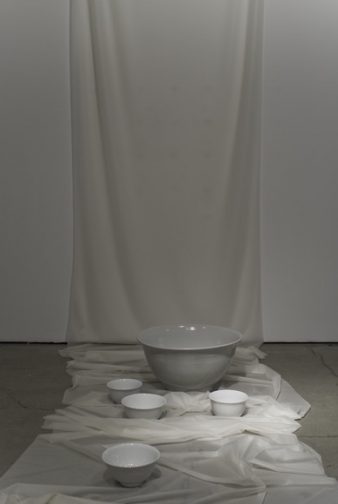
Solo exhibition
Installation view
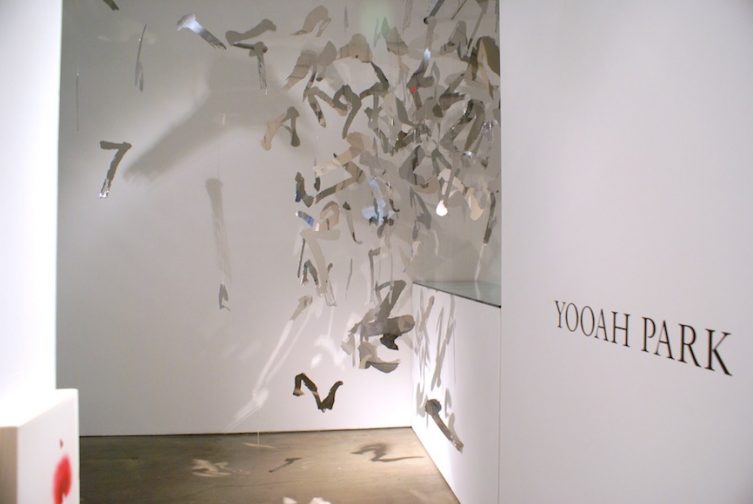
Solo exhibition
Installation view
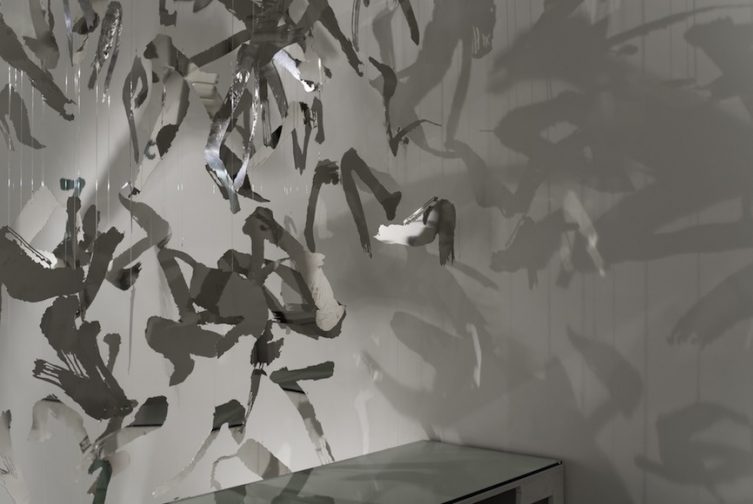
Solo exhibition
Installation view
ZONE: Chelsea Center for the Arts is proud to present the second solo exhibition of the gallery artist Yooah Park. This exhibition showcases the many facets of her recent work, as she takes her signature fusion of inherited Asian art forms and Western abstraction in excitingly new directions.
Park’s new work represents an imaginative leap forward, but this flowering is rooted in her understanding of traditional techniques. Trained as a brush painter, she is extending the gestural language of calligraphy into unexpected forms and mediums. In a suite of 100 small, square paintings Park abandons the brush; instead she finger paints directly onto the translucent, skin-like fabric of liquid vinyl, with the visceral intensity of an abstract Expressionist.
Her blood-red medium is Inju, concocted from cinnabar, perilla oil and cotton. The color and viscosity of the medium allude to sealing wax, colophon signatures and Gyong-myon-ju-sa, the red mineral pigment used in Korean Bujeok, talismans fashioned to ward off evil spirits. The mix of cinnabar, mercury and sulfur in Gyong-myon-ju-sa represents a balance between positive and negative forces. The delicate and potentially dangerous ritual of mixing diverse elements lives at the root of the ancient mystical science of alchemy.
Ceramics have historically been an integral part of Korean culture. For the current exhibition, Park has hand shaped 13 monumental porcelain rice bowls, symbols of renewal and vitality. These majestic vessels – 32 ½ inches in diameter, 14 ½ inches tall – engulf the exhibition space, but the delicacy of the celadon glaze makes them seem weightless. It is as if the free spirit within the clay had been liberated. The gentle irregularities of the bowls are eloquent reminders of the casting process in which dynamic natural forces are guided by the artist’s shaping hand and eye.
Yooah Park was born in Seoul, Korea and currently works and resides in New York City. She has exhibited extensively abroad, including Seoul, Paris, New York, Beijing, and Tokyo. Her largest exhibition “Writing in the Void” was shown at the Center for Architecture and Design in Mexico City and at the Central House of Artists Museum in Moscow. Several of her works are also in international art museum collections.
YOOAH PARK
Solo exhibition
March 7 – March 29, 2008
Opening Reception
6-8PM, Friday March 7
Yooah Park combines the aesthetic traditions of her native Korea with twenty-first century global technologies. This exhibition showcases the many facets of her recent work, as she takes her signature fusion of inherited Asian art forms and Western abstraction in excitingly new directions.
Ceramics have historically been an integral part of Korean culture. In 2004, ZONE presented Park’s 63 Cubes, heavy, solid forms in an elegiac matte charcoal color that alluded to temple tiles and funeral rites. For the current exhibition, Park has hand shaped thirteen monumental porcelain rice bowls, symbols of renewal and vitality. These majestic vessels – 32 ½ inches in diameter, 14 ½ inches tall – engulf the exhibition space, but the delicacy of the celadon glaze which is the color of a lunar moth’s wings, makes them seem weightless. It is as if the free spirit within the clay had been liberated. The gentle irregularities of the bowls are eloquent reminders of the casting process in which dynamic natural forces are guided by the artist’s shaping hand and eye.
Park’s new work represents an imaginative leap forward, but this flowering is rooted in her understanding of traditional techniques. Trained as a brush painter, she is extending the gestural language of calligraphy into unexpected forms and mediums. She laser-cuts brushstroke characters out of aluminum, then, suspends them as mobiles in an installation of cascading columns. Paper-thin, reflective and dangerously sharp-edged, they slice through the air with the physical energy of Action painting and the cool clarity of twenty-first century techno-modernism. She has freed calligraphy from the two dimensions of paper and ink and given writing a precarious sculptural identity of kinetic art.
The riff on calligraphy continues with a suite of 200 small, square paintings. Liquid vinyl, a synthetic material used by contemporary fashion houses, provides the non-traditional support. Park abandons the brush; instead she finger paints directly onto the translucent, skin-like fabric, with the visceral intensity of an abstract Expressionist. Her blood-red medium is Inju, concocted from cinnabar, perilla oil and cotton. The color and viscosity of the medium allude to sealing wax, colophon signatures and Gyong-myon-ju-sa, the red mineral pigment used in Korean Bujeok, talismans fashioned to ward off evil spirits. The mix of cinnabar, mercury and sulfur in Gyong-myon-ju-sa represents a balance between positive and negative forces. The delicate and potentially dangerous ritual of mixing diverse elements lives at the root of the ancient mystical science of alchemy.
Metamorphosis results when traditional knowledge is combined with a bold spirit of experimentation. Park’s sequence of red paintings constitutes both a personal diary and a record of the creative process. The goal of true alchemy, the philosopher’s stone that turns base material into gold, is the process that leads to self-understanding. Park breathes new life into raw materials – clay, pigment, metal, synthetic – through the incantatory power of words and gestures.
– Dr. Jennifer Baahng
Yooah Park currently resides in the New York area, but frequently travels to her native Korea. For years she has studied and traveled between the two places, and her artwork reflects this dual identification. At first glance, the use of black ink and brush on handmade paper in a free and gestural manner belie the artist’s Asian background, but there is a decidedly Western element here that is less obvious. Park’s paintings are characterized by a lyrical sense of movement. This is related to the artist’s practice of painting from a live dancer performing in her studio, so that her paintings might have a greater quality of flowing grace. This art, therefore, which some would link to an Asian tradition of brush calligraphy, is also intimately connected with the study of the human form that has preoccupied Western art since the Renaissance.
Yooah Park’s pieces are filled with forms that seem to tumble and glide beyond the frame into an infinite space established by the diaphanous layers of carefully-laid paper. This is a space first articulated by the American canvas painters of the postwar New York school; Park brings it forth here through the use of materials with centuries of Asian heritage.
In today’s art world there is much talk of “bridging East and West.” Rarely do we see a vision that accomplishes such an integration. Neither Asian nor American, but rather a joyous fusion of the two, the art of Yooah Park succeeds as a new synthesis of aesthetic strengths from both spheres.
Solo Exhibitions
2006 Writing in the Void
The Central House of Artists Museum, Moscow, Russia
The Center for Architecture and Design, Mexico City, Mexico
2004 ZONE: Chelsea Center for the Arts, NY
2003 Gana Insa Art Center, Seoul
2002 Gana Insa Art Center, Seoul
2001 Andrew Bae Gallery, Chicago
2000 Hudson River Gallery, NY
1999 Jean Art Gallery, Seoul
1998 Space Untitled, NY
1997 Shirota Gallery, Tokyo
Gallery Bhak, Seoul
1996 Gallery Simon, Seoul
MANlF Seoul International Art Fair, Seoul
MAC 2000, Paris
1995 Seorim Gallery, Seoul
Gallery Ihn, Seoul
’95 Seoul Art Fair (J&C Gallery), Seoul
1994 East-West Cultural Studies, NY
’94 Seoul Art Fair (J&C Gallery), Seoul
1993 Sampoong Gallery, Seoul
1990 Jadite Galleries, NY
Selected Group Exhibitions
2007 ZONE: Chelsea Center for the Arts, New York, NY
2006 ZONE: Chelsea Center for the Arts, New York, NY
2004 Korean Contemporary Art,
Forum Gallery, Dallas, TX
2003 Best Star, Best Artist,
Gana Insa Art Center, Seoul
2002 KCAF, Seoul, Korea
Works on Paper, New York
Art of Pacific Asia, New York
2001 KCAF, Seoul, Korea
Works on Paper, New York
Art of Pacific Asia, New York
Kwangju International Ceramic Expo,
Kwangju, Korea
2000 ACAF, Sydney, Australia
Art Miami, Miami, FL
Works on Paper, New York
Art of Pacific Asia, New York
1999 NICAF, Tokyo, Japan
ACAF, Sydney, Australia
Works on Paper, New York
Art of Pacific Asia, New York
1998 NICAF, Tokyo, Japan
SIAF, Seoul, Korea
Art Miami, Miami, FL
1997 NICAF, Tokyo, Japan
MANIF, Seoul, Korea
SIAF, Seoul, Korea
1996 MANIF, Seoul, Korea
SIAF, Seoul, Korea
Related:
Categories: exhibitions
Tags: Yooah Park
Slought in New York at ZONE: Chelsea Center for the Arts
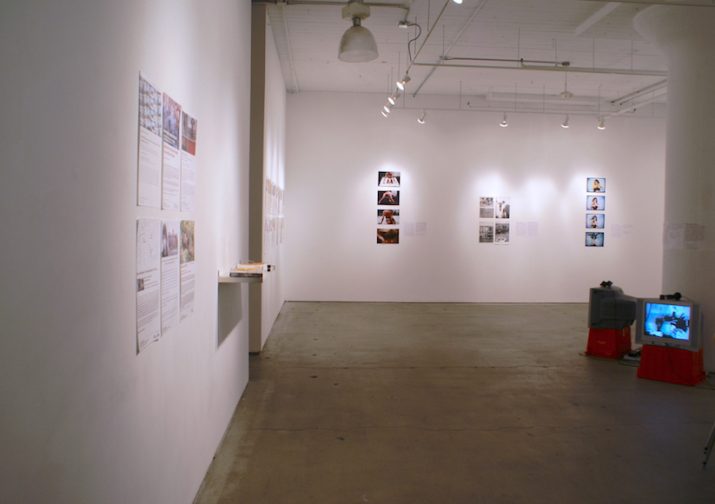
Installation view
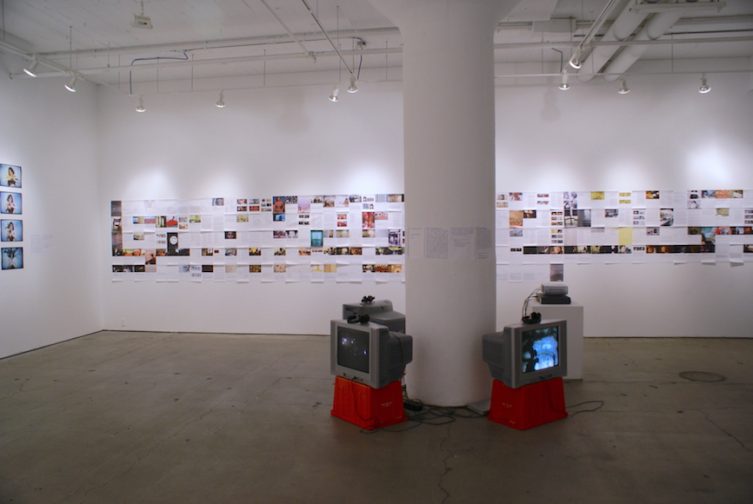
Installation view
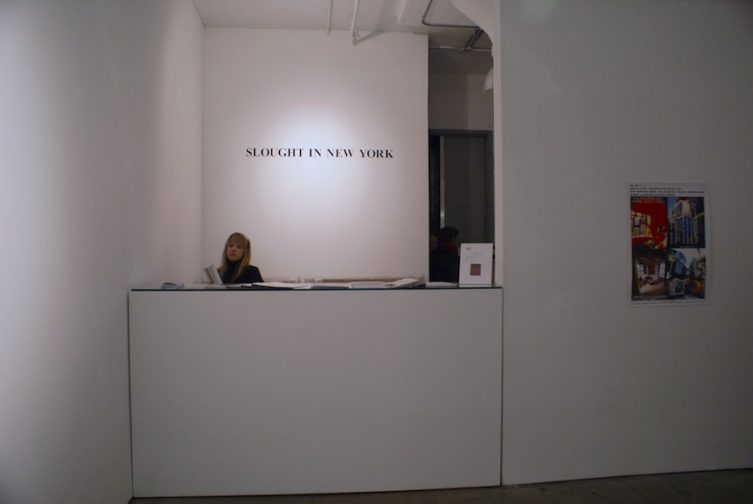
Installation view
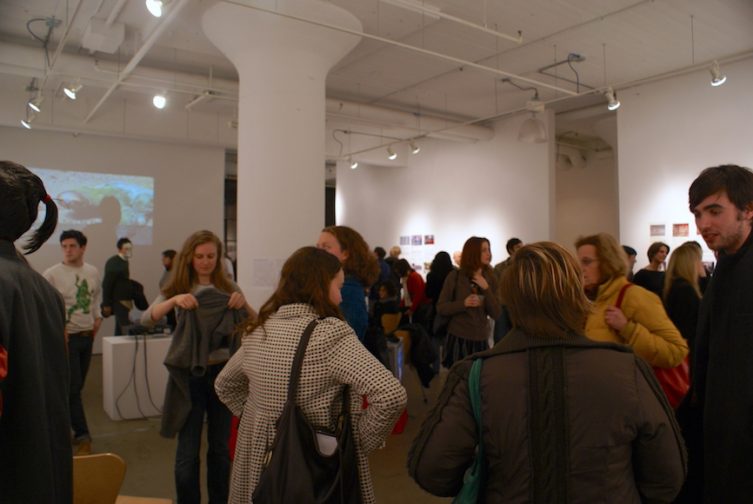
6:30 - 8:30PM, December 7th, 2007
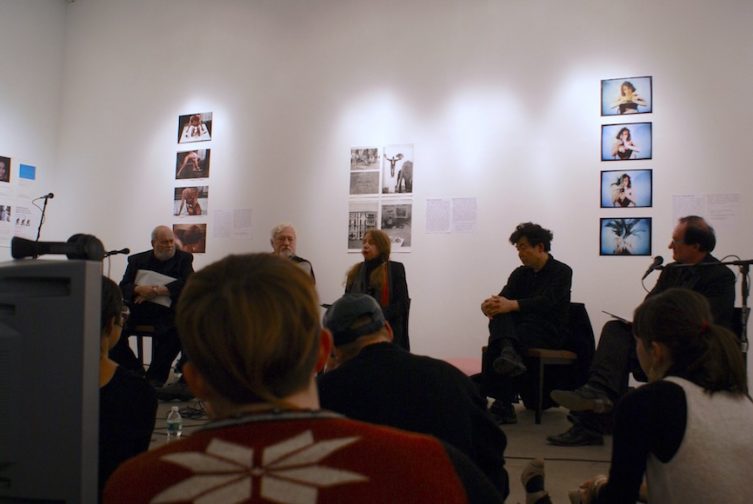
A panel discussion with Arakawa + Gins, Arthur C. Danto, Don Idhe and others on the problematics of cultural production after Duchamp
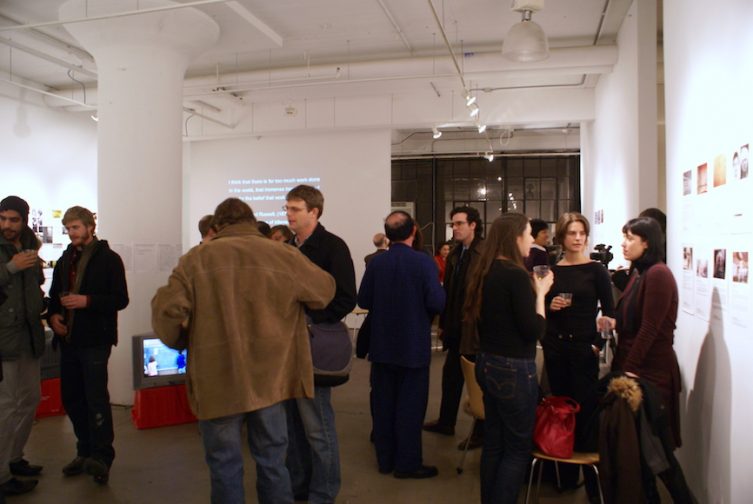
6:30 - 8:30PM, December 7th, 2007
An archival exploration into the activities of Slought Foundation, Philadelphia, featuring information about past projects with William Anastasi, Arakawa + Gins, Günter Brus, Hélène Cixous, Braco Dimitrijevic, Fred Forest, Hermann Nitsch, Dennis Oppenheim, David Stephens, Marjorie Welish, et al.
How can organizations located on the periphery of major international art cities contribute to and provoke the cultural and political landscape? What can a young organization that resists the market-driven orientation of today’s cultural institutions achieve with minimal private funding and an all-volunteer staff? An archival exploration into the activities of Slought Foundation in Philadelphia since its inception in 2002. It will feature information about past projects with William Anastasi, Arakawa + Gins, Günter Brus, Hélène Cixous, Braco Dimitrijevic, Fred Forest, Hermann Nitsch, Dennis Oppenheim, David Stephens, Marjorie Welish, as well as documentation of over 200 past performances, conversations, exhibitions, and publications at Slought Foundation that explore new futures for contemporary political and cultural life.
Slought in New York at ZONE:Chelsea Center for the Arts
Curated by Aaron Levy, Jean-Michel Rabaté, and Osvaldo Romberg
Opening Reception
6-9PM, Thursday November 29, 2007
In conjunction:
Thursday, November 29th, 7-8pm
“Should Art Abolish Art?”
A conversation with Arakawa + Gins and others
Moderated by Jean-Michel Rabate and Aaron Levy; Introduced by Osvaldo Romberg
Friday, December 7th, 6:30-8:30pm
“In Defense of Sloth: A Primer”
Organized by Cabinet Magazine and Slought Foundation by Aaron Levy and Sina Najafi
Saturday, December 8, 2007; 11:00am-5:30pm
“In Defense of Sloth: A Symposium” at The Great Hall, Cooper Union
Organized by Cabinet Magazine and Slought Foundation
Hosted by and in partnership with the Cooper Union, Irwin S. Chairman School of Architecture
Related:

Slought in New York at ZONE: Chelsea Center for the Arts
Categories: exhibitions
Tags: slought
CHRISTOPHER HAUN: Empire Line
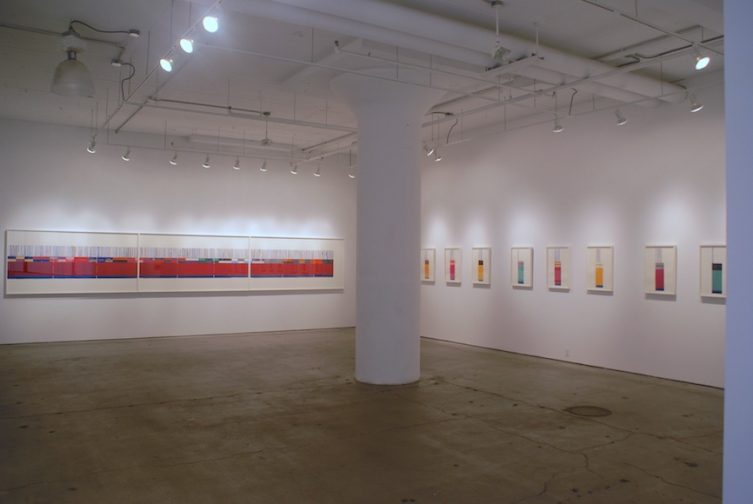
Solo exhibition by Christopher Haun
Installation view
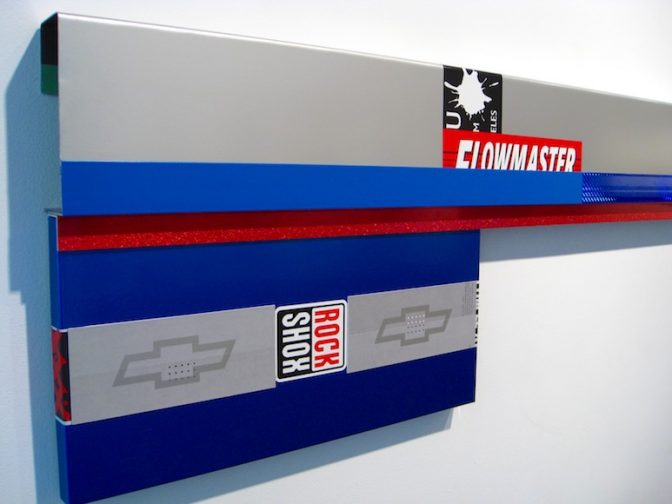
Solo exhibition by Christopher Haun
Installation view
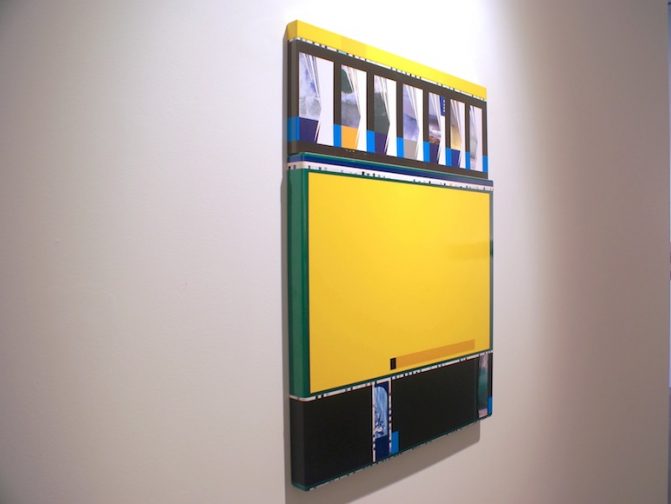
Solo exhibition by Christopher Haun
Installation view
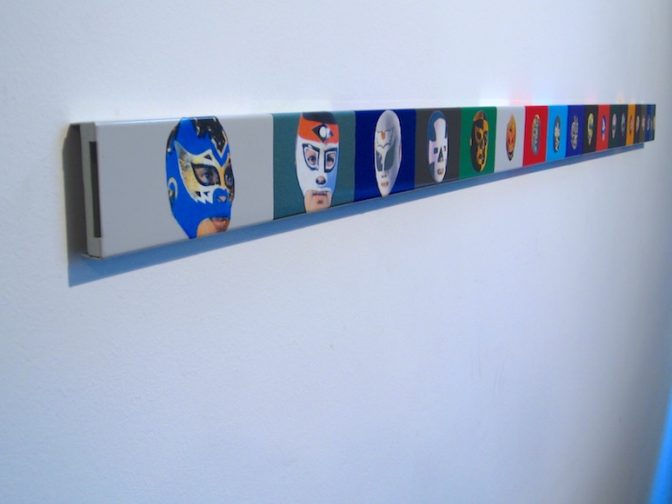
Solo exhibition by Christopher Haun
Installation view
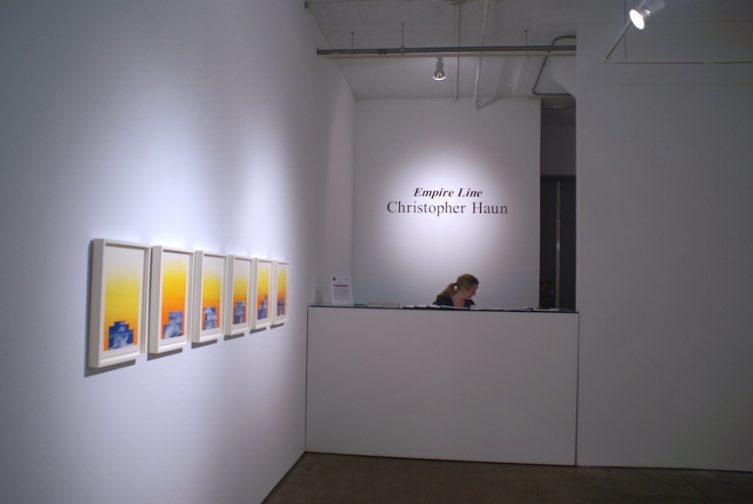
Solo exhibition by Christopher Haun
Installation view
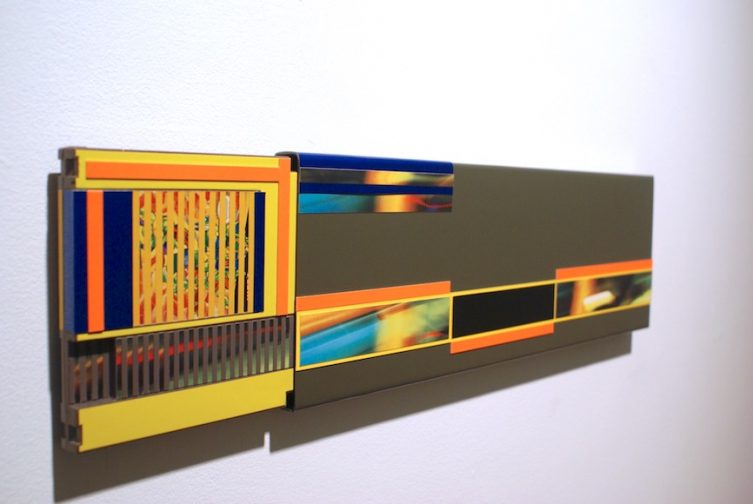
Solo exhibition by Christopher Haun
Installation view
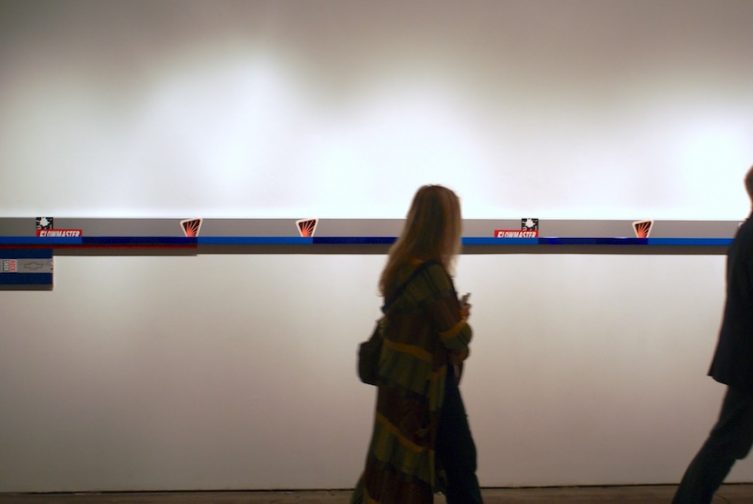
Solo exhibition by Christopher Haun
Installation view
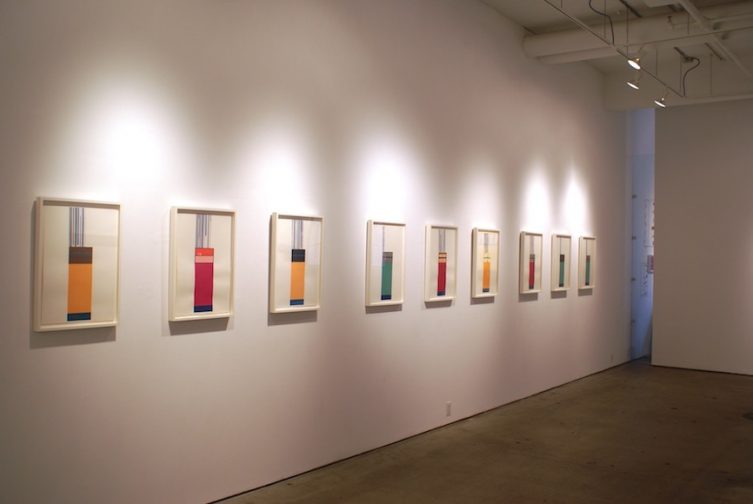
Solo exhibition by Christopher Haun
Installation view
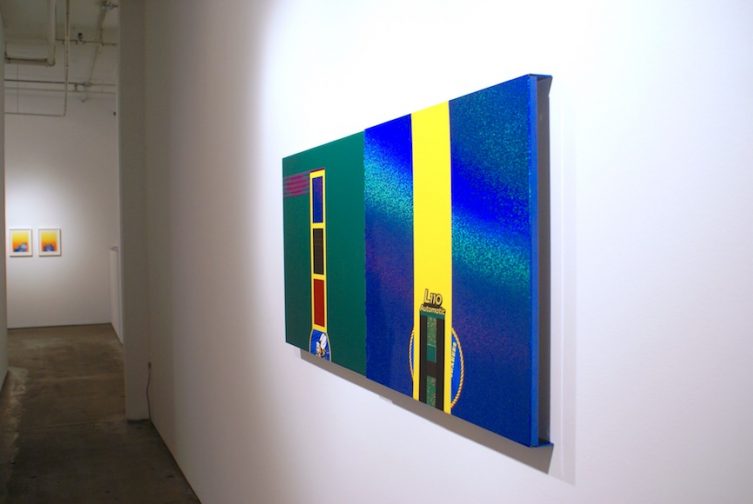
Solo exhibition by Christopher Haun
Installation view
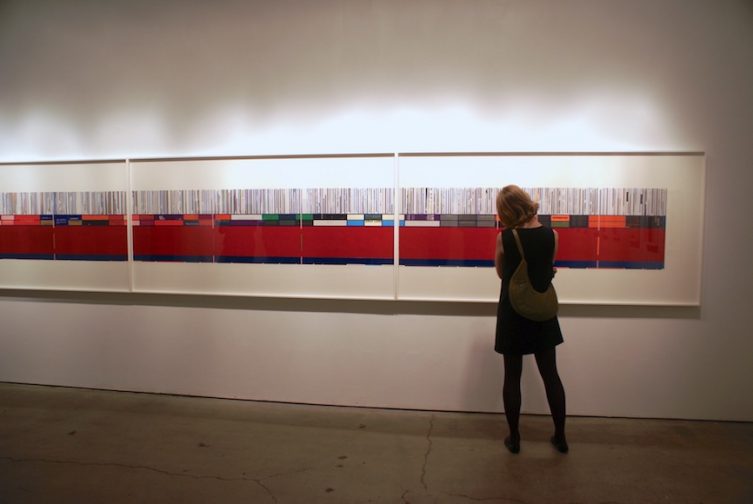
Solo exhibition by Christopher Haun
Installation view
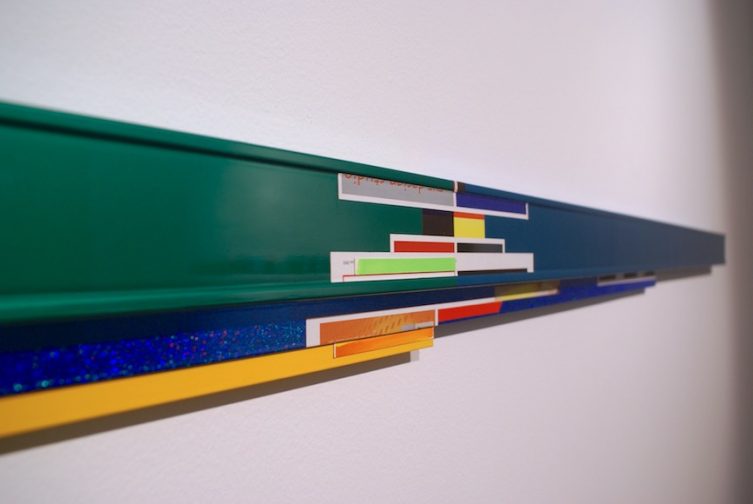
Solo exhibition by Christopher Haun
Installation view
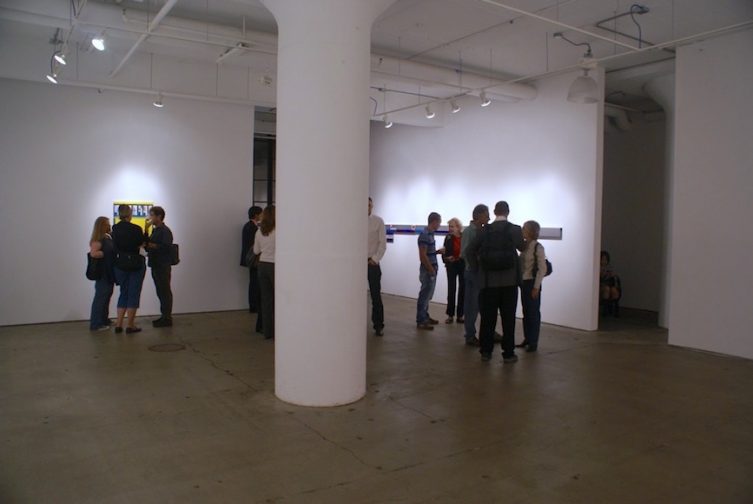
Solo exhibition by Christopher Haun
Installation view
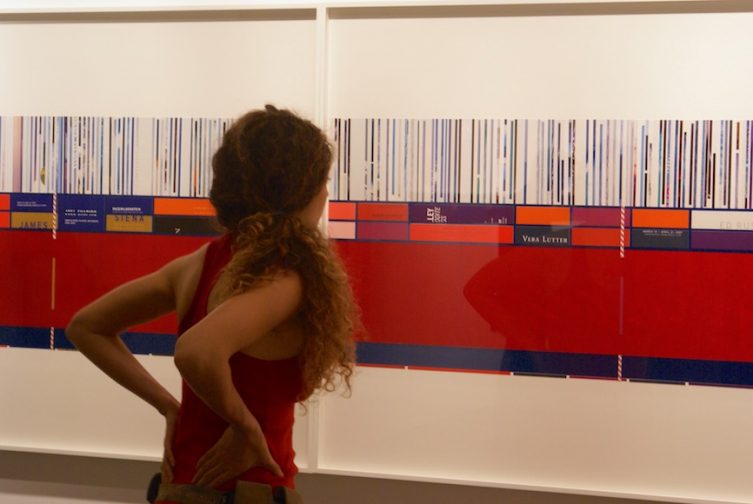
Solo exhibition by Christopher Haun
Installation view
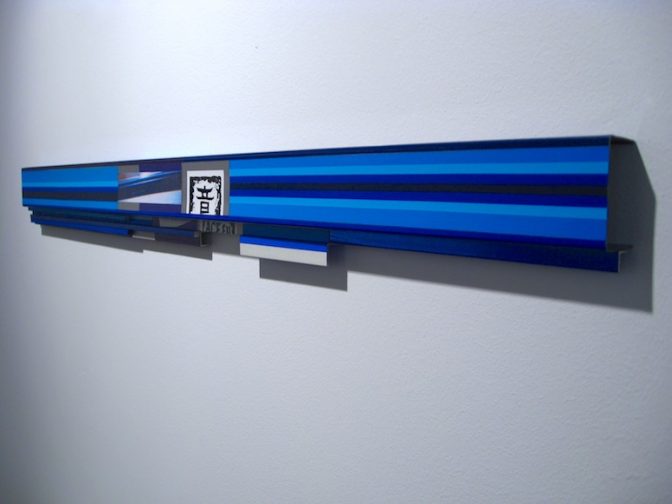
Solo exhibition by Christopher Haun
Installation view
ZONE:Chelsea Center Center for the Arts is delighted to announce a major exhibition of new work by Christopher Haun. This is his first solo exhibition since joining the gallery.
Christopher Haun explores the historically fertile borderline between abstraction and landscape, building on his intimate familiarity with two uniquely American regions, the Hudson River and the California coast. The title of the exhibition, Empire Line, derives from Haun’s recent series based on his commuting experience on Amtrak’s eponymous train service. From his train car, Haun watches the same majestic panorama of a quintessential American landscape that inspired the nation’s first great art movement, the Hudson River School. Haun distills this sense of continuity – the temporal as well as spatial fluidity of the Hudson — in his wide, narrow-format images. Empire Line, AM, West View, 2007abstracts the riverside view, playing a broad band of magenta against the broken rhythm of multitude of rectangles and vertical strips.
Haun’s background as an architectural draftsman is evident in his meticulous craftsmanship, giving Precisionist clarity of Charles Sheeler to a Romantic subject. Haun’s materials and method underscore the complexity of his approach. He has an affinity for Pop Art, most readily seen in his colorful collages that are comprised of a variety of everyday paper materials. He constructs his tightly controlled zips of landscape from collage elements which have strong personal associations — surfing magazines, a testament to his passion for the sport, and gallery invitation cards for artists he admires. In some works, vibrantly colored steel, aluminum and vinyl add to the dialogue between nature and commercialization, a theme explored by the Hudson River School painters as well as Pop Artists.
The landscape genre is intrinsically Romantic, and painterly looseness is often considered part of that paradigm. But Haun’s passion for nature is distilled into precise diagrams of moments in time. Intimations of personal history add subtle layers of meaning to the visually cogent compositions of this elegant draftsman and colorist.
Christopher Haun
Empire Line
October 18 – November 24, 2007
Opening Reception
6-8PM, Thursday October 18, 2007
Christopher Haun explores the historically fertile borderline between abstraction and landscape, building on his intimate familiarity with two uniquely American Regions the Hudson River and the California coast. The title of the exhibition, Empire Line, derives from Haun’s recent series based on his commuting experience on Amtrak’s eponymous train service. The “Empire Line” train travels along the eastern side of the Hudson River where the tracks wind along the riverbank literally at the edge of the water. With its source in the Adirondack Mountains, the Hudson River flows through the rolling hills of upstate New York past bucolic small town America and into the hustling hub of Manhattan.
From his train car, Haun watches the same majestic panorama of a quintessential American landscape that inspired the nation’s first great art movement, the Hudson River School. A two-hour video record of this streaming Whistlerian landscape seen through the train window is on view in the gallery. Haun distills that sense of continuity—the temporal as well as spatial fluidity of the Hudson—in his wide, narrow-format images. Empire Line, AM, West View, 2007abstracts the riverside view, playing a broad band of magenta against the broken rhythm of multitude of rectangles and vertical strips. The streamlined shapes evoke not only the river, but also the design of the train cars, with their ribbons of windows and decorative stripes.
Haun’s background as an architectural draftsman is evident in his meticulous craftsmanship, giving Precisionist clarity of Charles Sheeler to a Romantic subject. Haun’s materials and method underscore the complexity of his approach. He has an affinity for Pop Art, most readily seen in his colorful collages that are comprised of a variety of everyday paper materials. He constructs his tightly controlled zips of landscape from collage elements which have strong personal associations—surfing magazines, a testament to his passion for the sport, and gallery invitation cards for artists he admires. Although shredded and cut into precise geometric forms, vestiges of text survive in these mementos. The sharp rectangles and shapes cut from these materials Haun primarily uses as the colors in his palette. In some works, vibrantly colored steel, aluminum and vinyl add to the dialogue between nature and commercialization, a theme explored by the Hudson River School painters as well as Pop Artists.
Haun investigates the layering of compositional elements in vertical as well as horizontal format. His passion for surfing leads to meditations focusing on how the individual responds to waves as vertical phenomena. He explains: “My body is no longer heavy, but light and buoyant. In the water, I literally experience a great weight being lifted, envisioning a huge burden lifted from spirit.” This is the dynamic at work in Haun’s Spray series, in which triple, overlapping rectangles of blue wave rise into diffuse yellow acrylic skies. More abstract images center on blocks of paint-and-collage in columns of intense, sometimes acidic color. Some of these are oriented vertically while some are arranged horizontally. The play of shape and color suggests Josef Albers, “Homage to the Square,” Pop Art and even a harder-edged Mark Rothko, but Haun’s pictures are also a record of his daily experiences, tastes and interests.
The landscape genre is intrinsically Romantic, and painterly looseness is often considered part of that paradigm. But Haun’s passion for nature is distilled into precise diagrams of moments in time. Intimations of personal history add subtle layers of meaning to the visually cogent compositions of this elegant draftsman and colorist.
Dr. Jennifer Baahng
Surfing waves is like making art. It is a meditation. It is tuning in to the rhythms of the earth, the moon, and the planets. It is beach culture and surf culture, slick and quick, slow and mellow. Returning to oneness, returning to nature is our destiny. In my daily practice, I return to nature. Going to the water’s edge and immersing myself in the womblike body of water that is the ocean, my body is no longer heavy, but light and buoyant. In the water, I literally experience a great weight lifted, envisioning a huge burden lifted from my spirit. Riding the rhythmic pulse of nature, mine is an emotional connection to the wave riding experience. In surfing as in art making, creative carving and slicing are a visceral expression of my spirit and my body. Intuitive and primordial, water is from where we came. We are water. Flowing and ebbing, forever-mutable liquid forms, capable of various forms- gaseous or solid. Moving in fast and slow motion, with opaque and transparent surfaces, with both shallowness and great depth, water is both the elixir of life and a vehicle for calming our spirit.
Christopher Haun
Categories: exhibitions
PILAR GOUTAS: Parteaguas
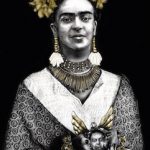
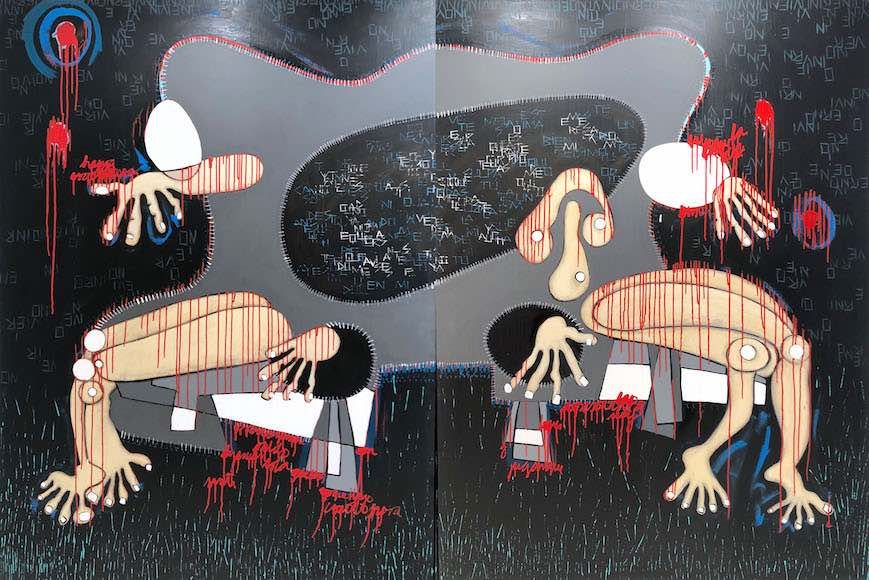
PARTEAGUAS, 2005
Acrylic on canvas, Diptych
79 x 118 in. (200 x 300 cm)
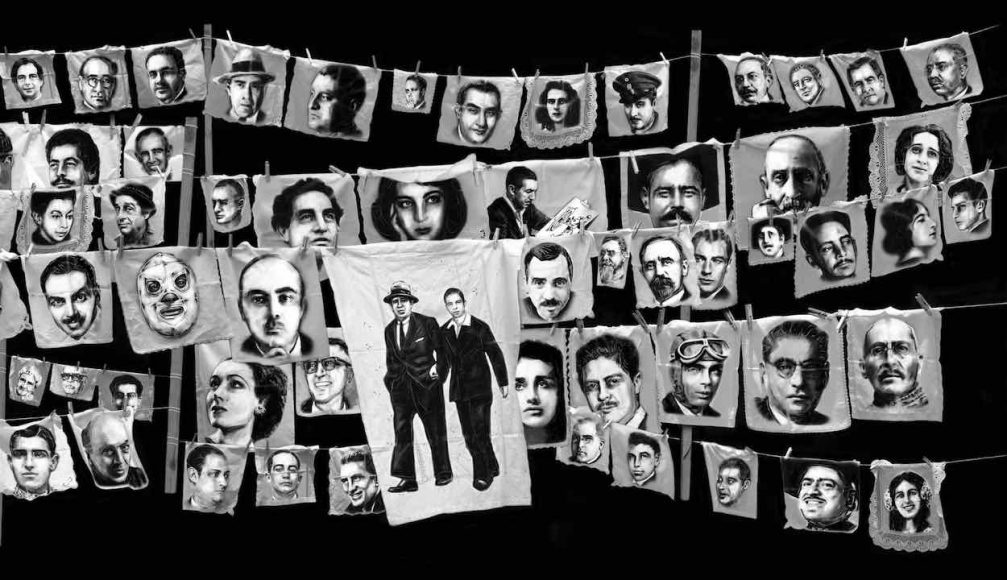
Mural PRENDES, 2018-2019
C-print on acrylic by Diasec mounted on Sintra board with aluminum frame
30 x 197 in. (77 x 500 cm), in 4 parts
Detail
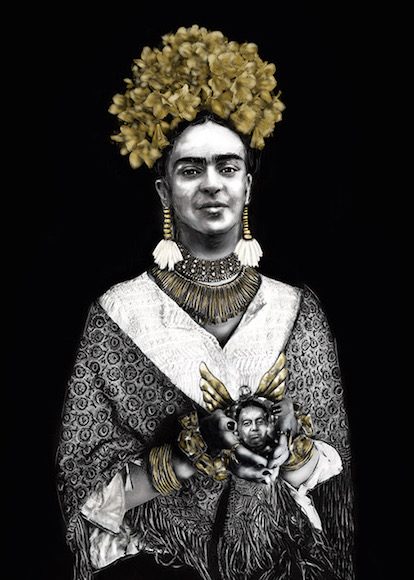
Portrait CERO, 2018-2019
C-print on acrylic by Diasec mounted on Sintra board with aluminum frame
34 x 47 in. (86 x 120 cm)
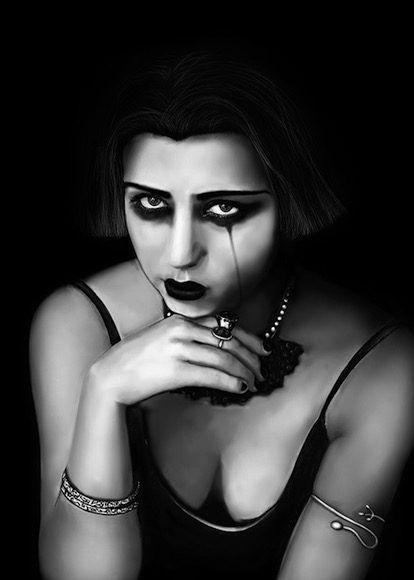
Portrait CUATRO, 2018-2019
C-print on acrylic by Diasec mounted on Sintra board with aluminum frame
59 x 42 in. (150 x 107 cm)
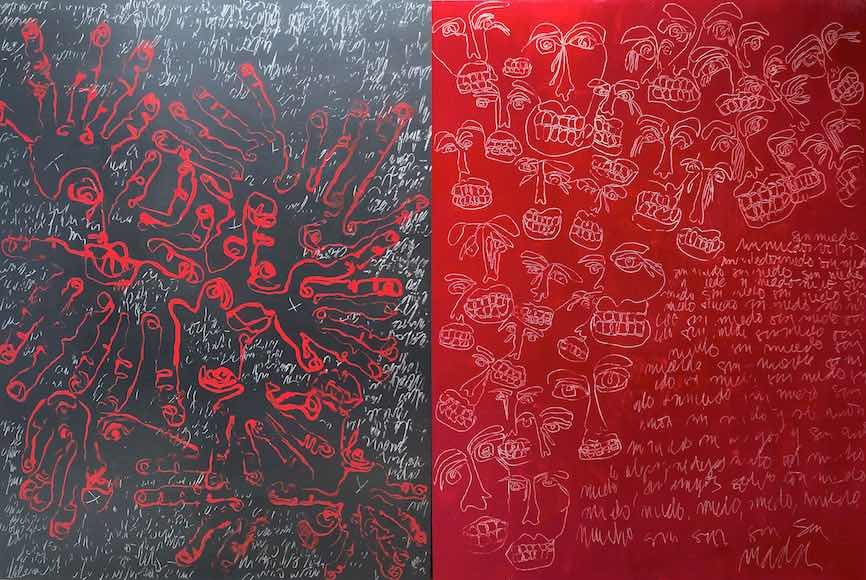
Sin Miedo, 2006 - 2008
Acrylic on wood, Diptych
63 x 96 in. (169 x 240 cm)
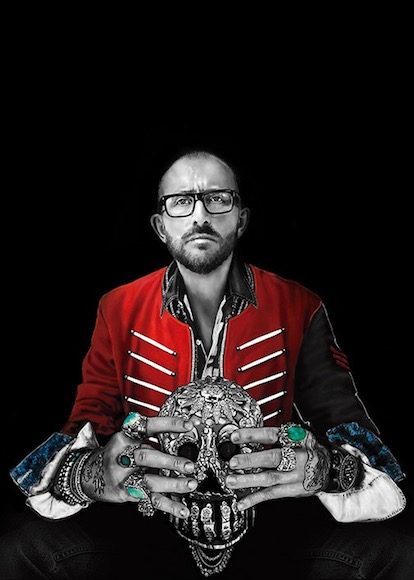
Portrait UNO, 2018-2019
C-print on acrylic by Diasec mounted on Sintra board with aluminum frame
59 x 42 in. (150 x 107 cm)
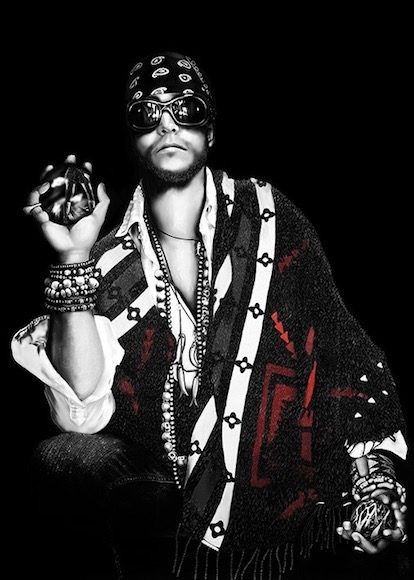
Portrait DOS, 2018-2019
C-print on acrylic by Diasec mounted on Sintra board with aluminum frame
59 x 42 in. (150 x 107 cm)
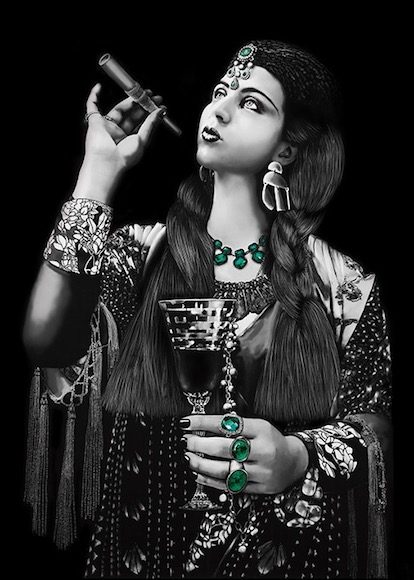
Portrait SEIS, 2018-2019
C-print on acrylic by Diasec mounted on Sintra board with aluminum frame
59 x 42 in. (150 x 107 cm)
Baahng Gallery is pleased to announce the gallery representation of Pilar Goutas and to present Parteaguas, her first solo exhibition with the gallery, showcasing murals, portraits, and paintings. The exhibition runs from April 25 thru May 31, with the opening reception held at the gallery on Saturday, April 27th, 3 – 5PM, concurrently Madison Ave Gallery Walk 2019.
Delving into Latin American magical realism and rooted in indigenous heritage of Mexico, Pilar Goutas forges her own take on the Surrealist current inventing a unique style merging reality with the irrationality of the unconscious: The portrait series, created using photomontage, collage, and superimposition of digitally morphed staged subjects, birth unsettling images with wits and sentiments; The drawings and paintings are embedded with symbols and codes that are decipherable only as in gestures resulting a kind of pictorial intelligence. With a personal narrative, Parteaguas offers a mythical, abstract, and atemporal world: It is a theater without categorization requiring no validation.
Pilar Goutas lives and works in Mexico. She studied Graphic and Fashion Design and her works have been exhibited among galleries and museums in Beijing, Berlin, Venice, New York, and Mexico City.
.
PILAR GOUTAS
PARTEAGUAS
April 25 – May 31, 2019
Opening Reception
Saturday, April 27th, 3-5PM
Parteaguas, it is the main idea from which the artistic work of Pilar Goutas departs, is the turning point that separates the precedent from the consequent, through which she demonstrates a continuous process of transferring itself during the creative act, where there is a before and an after or a beginning of an end. It is waterfall,the dividing line or the instant that separates a moment from another, a territory, an image, an idea or conception from another. Therefore,her work emerges from the embodiment of a figure to the creation of a language that suggests to rethink the paradigms and the conception of being.
The characters are the result of a journey of mutations from something preview to something new. They conclude as unique, characteristic of themselves. They represent the viabilityof the reconstitution of oneself, to encounter a solemn dimension where it is admissible to be. They reflect the possibility to breach borders, to cross limits, or change origins. They express of the inclusion of diversity, of the non-existent to make it evident, of what is there and what can be here. Because the turning point of who we are, lies on us.
Pilar Goutas transfers emotions through writing. She creates a full language of codes and symbols that becomes decipherable when they are perceived as gestures. It is the expression that motivates to resignifying communication processes, ideas, concepts, ideas and feelings; a before and after. The intensity of the forces that bind the lines is devoid of order. Writing stripped of all formal reading discovers a desirable place to grant. The artwork becomes an unexplored dimension where it is conceivable to build, create and imagine all beings and their constant metamorphosis.
Pilar Goutas shows a transition to endless emotions and ideas that surround all events of an atmosphere evoked from their intensities. From the writing and the gestures, to the conception of surreal beings, she provokes to reassess what we are, how we feel and how we can transform us. The artistic displacement to an object of art or a mythical figure is her deepest proposal to express that from the breaking point everything is possible.
Natalie Gama Pourdanay
Categories: exhibitions
Tags: Pilar Goutas
